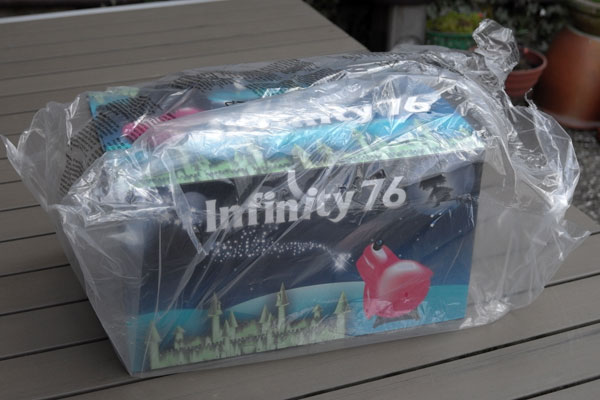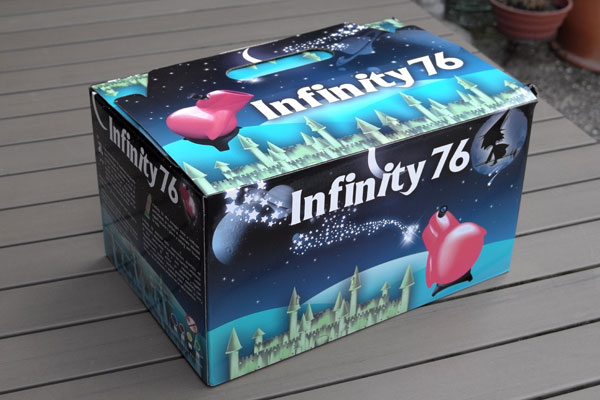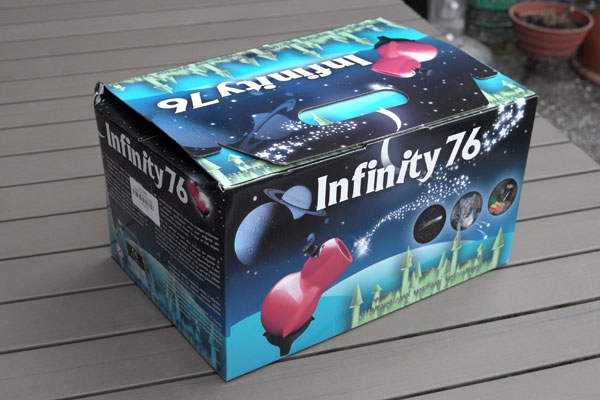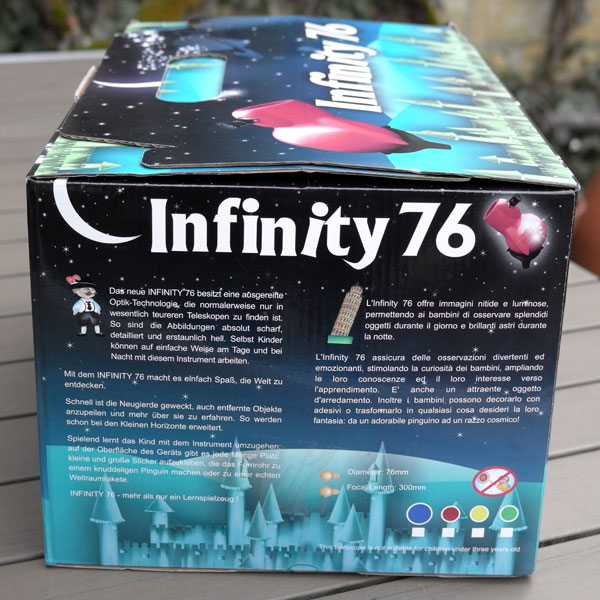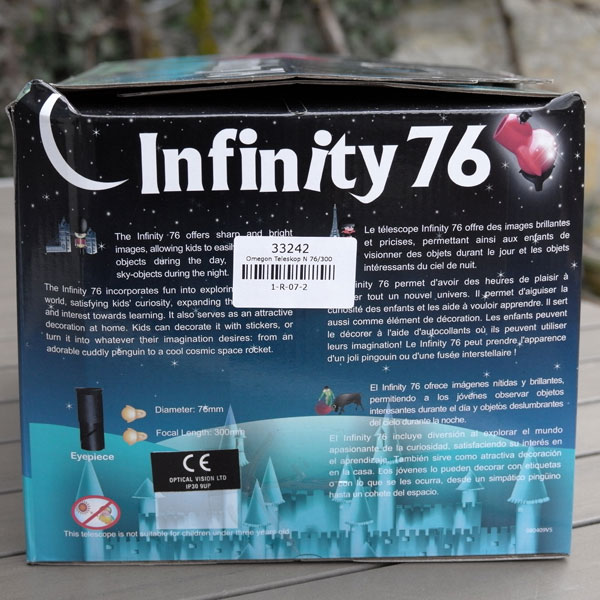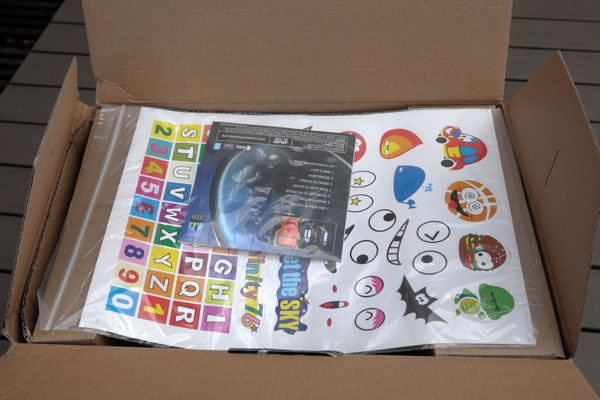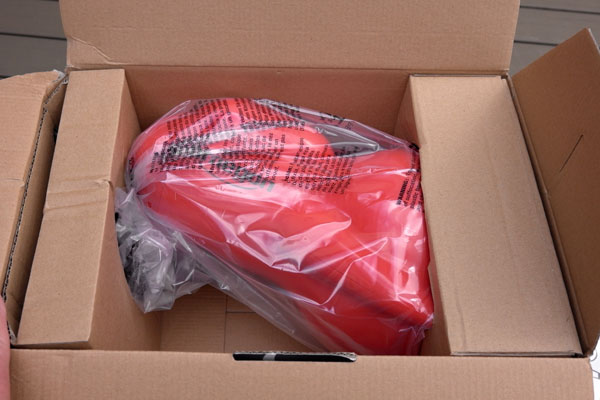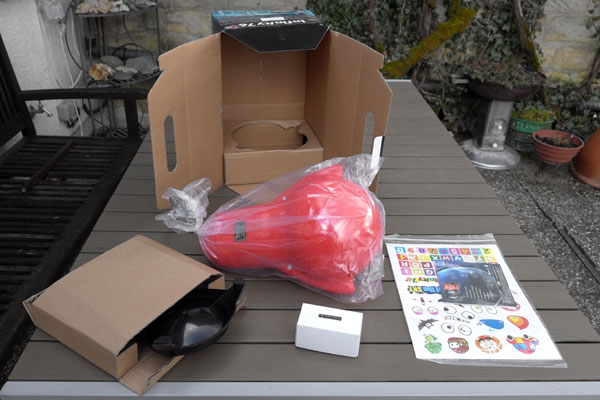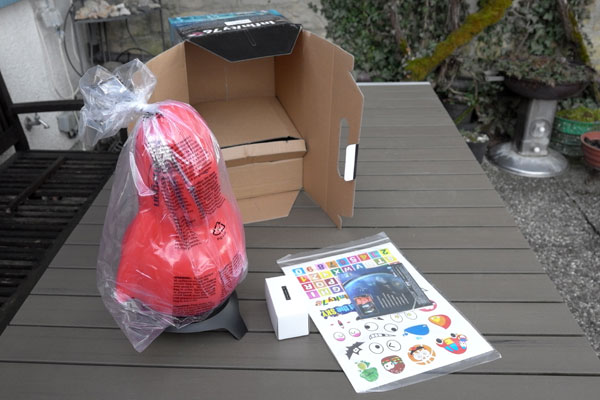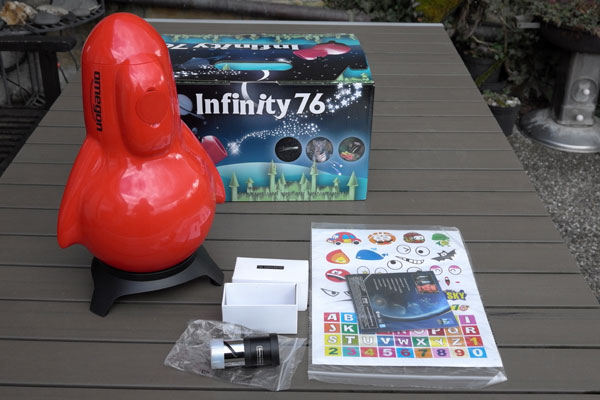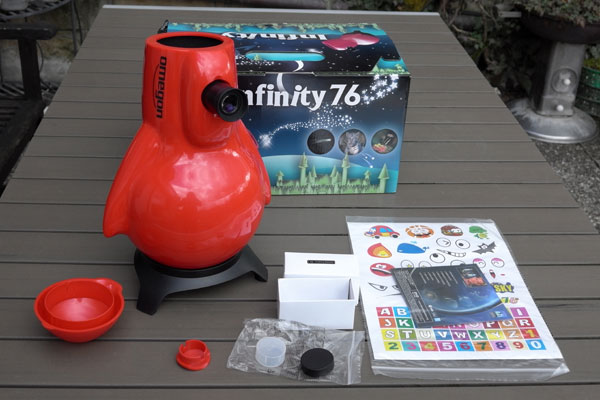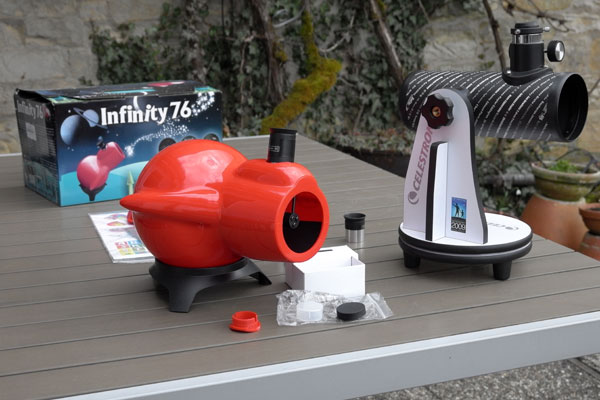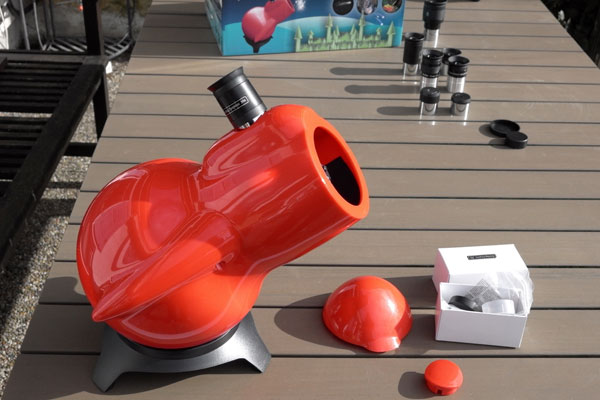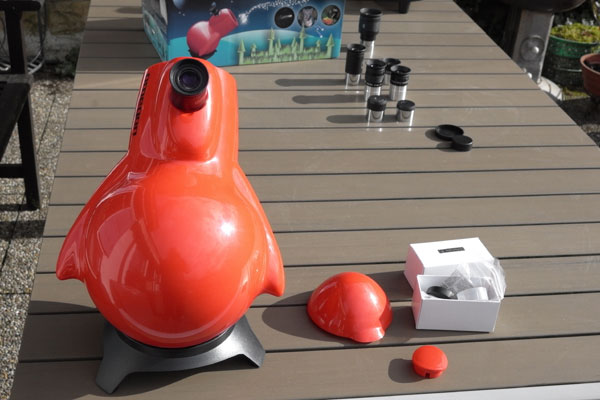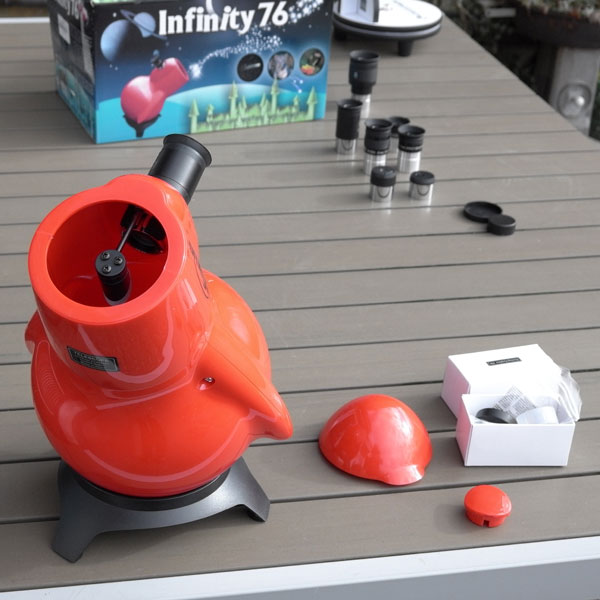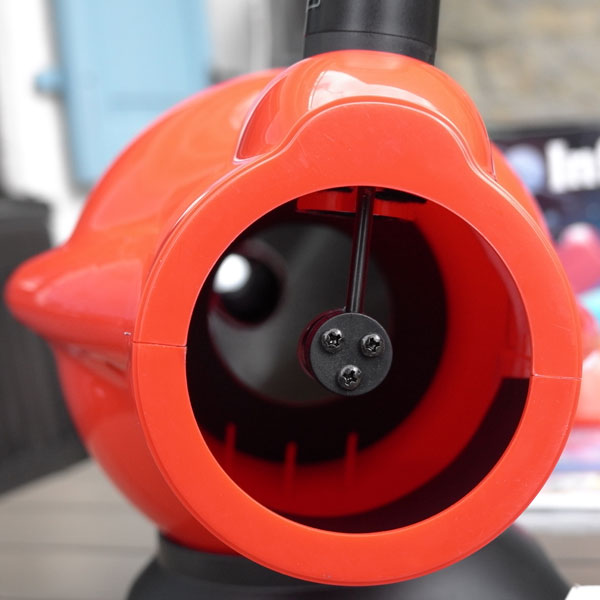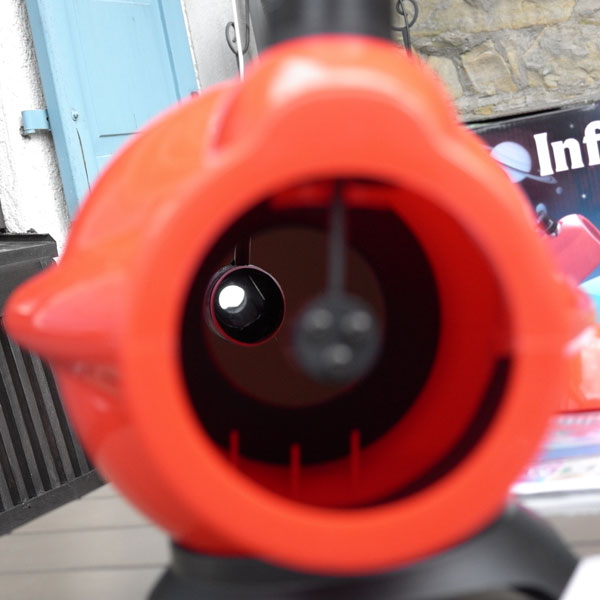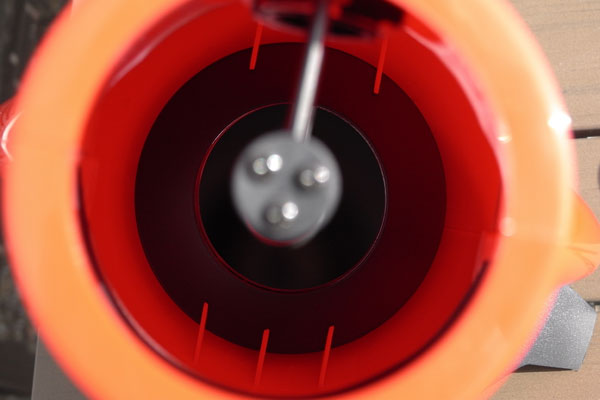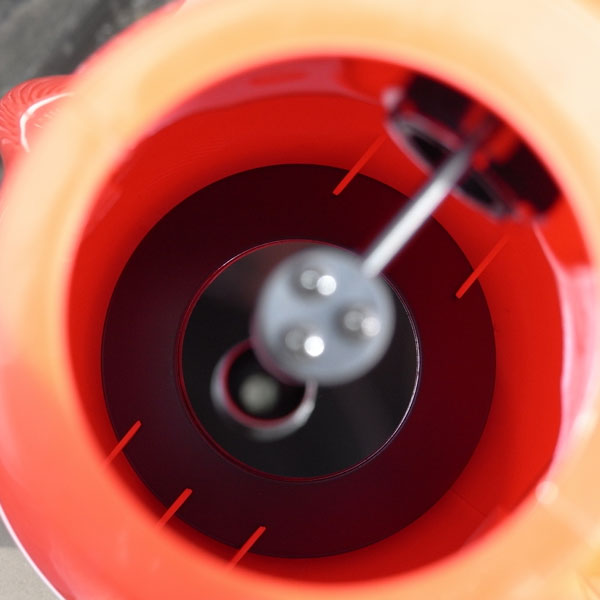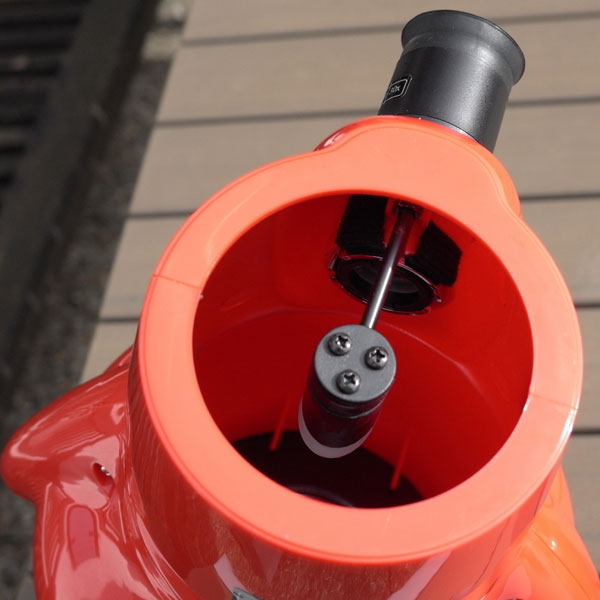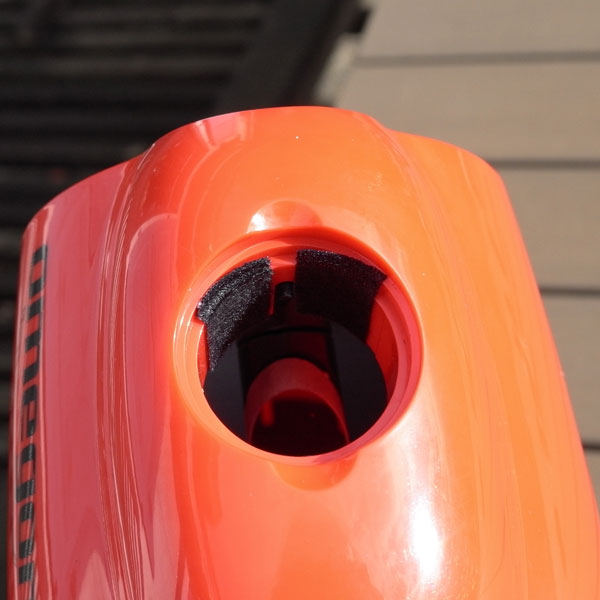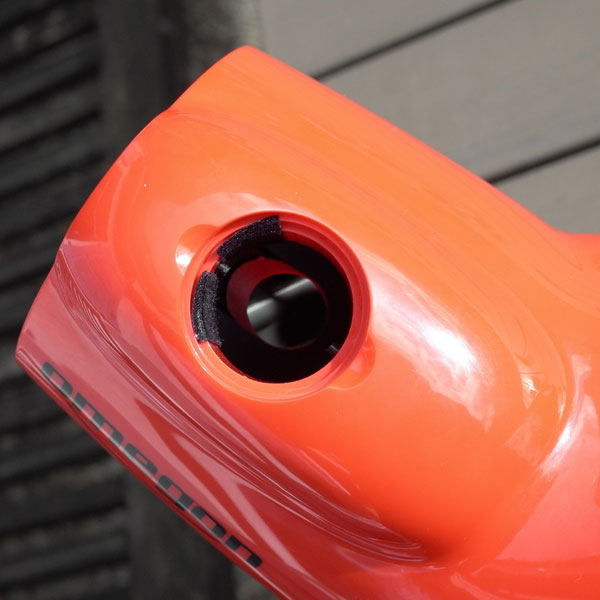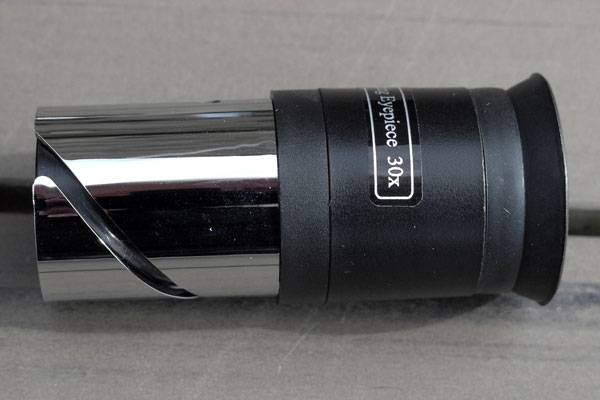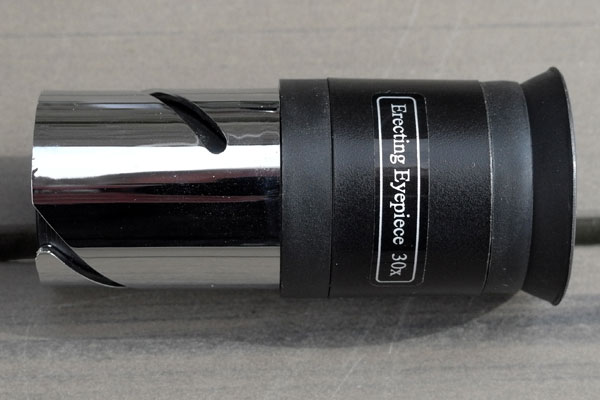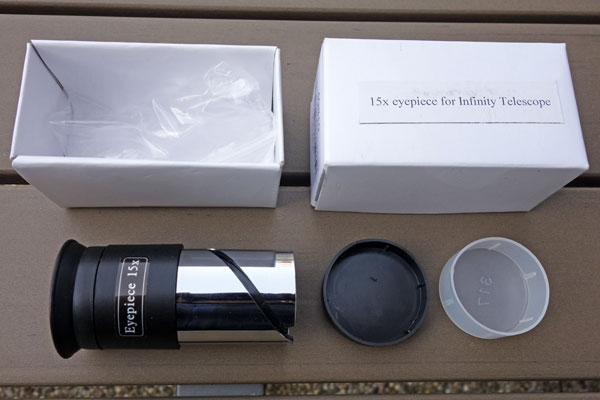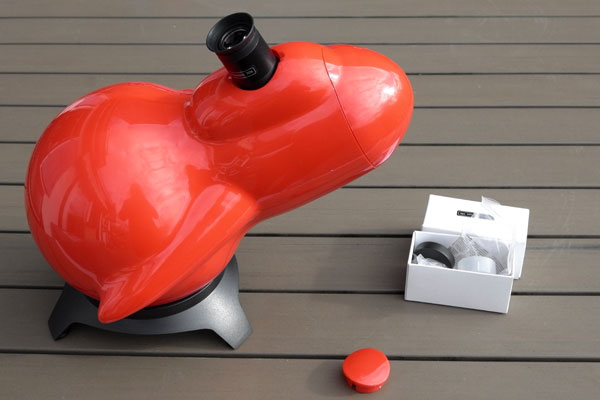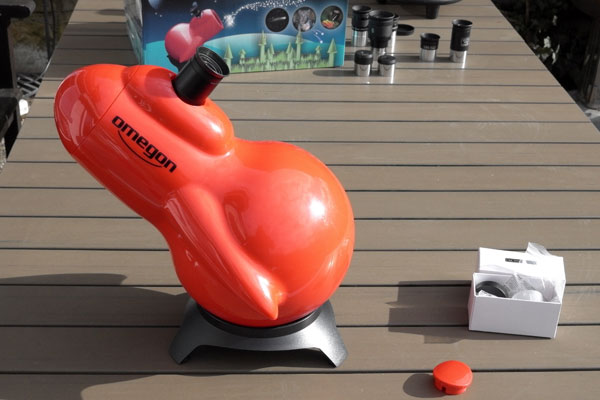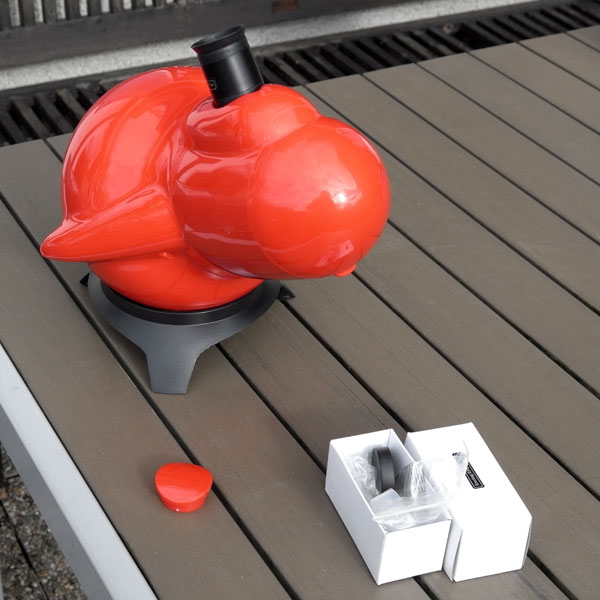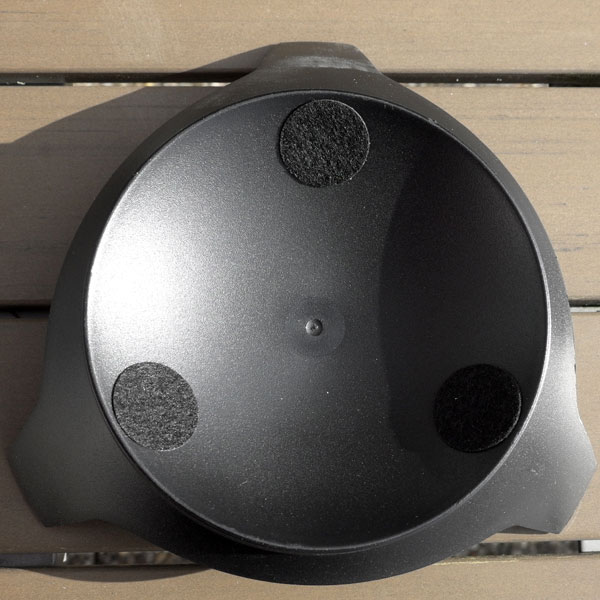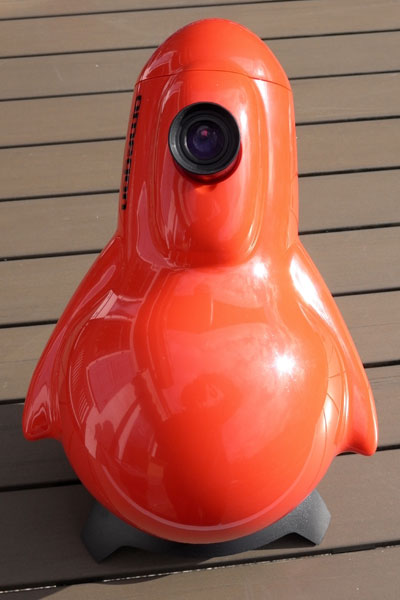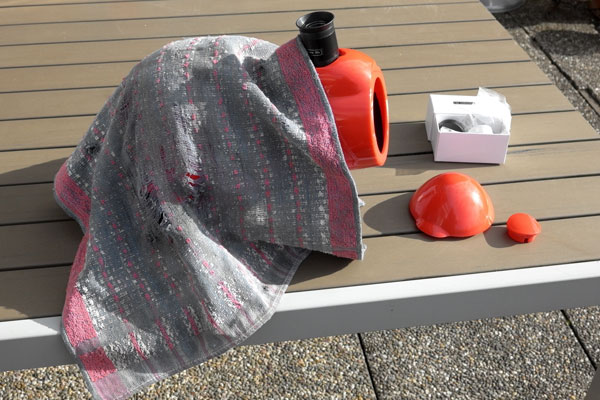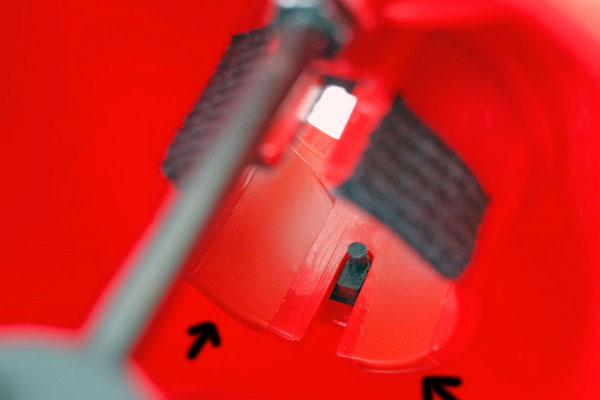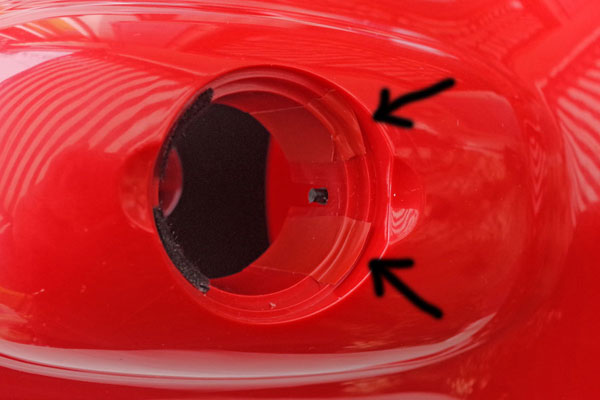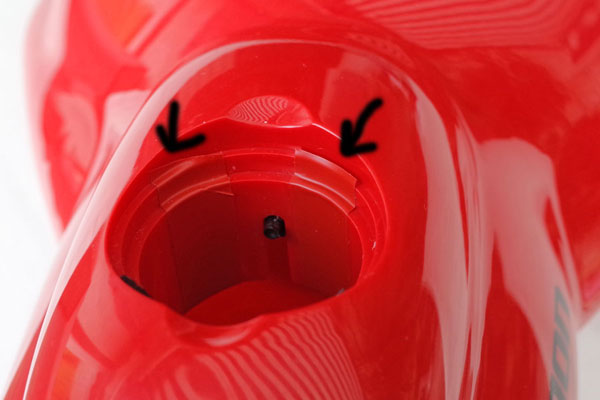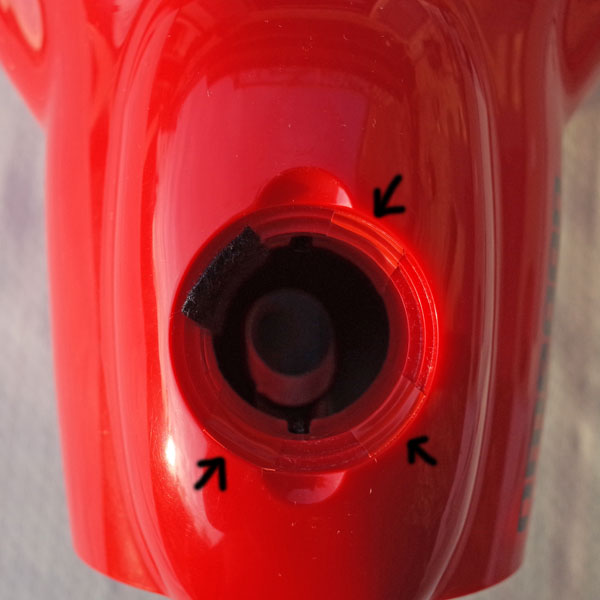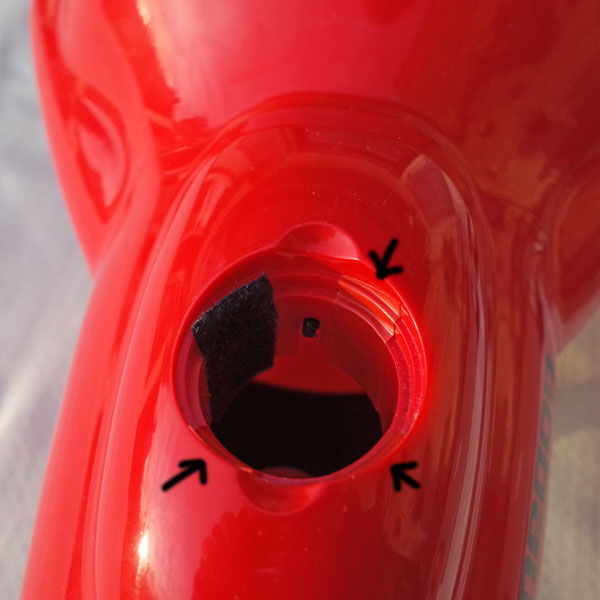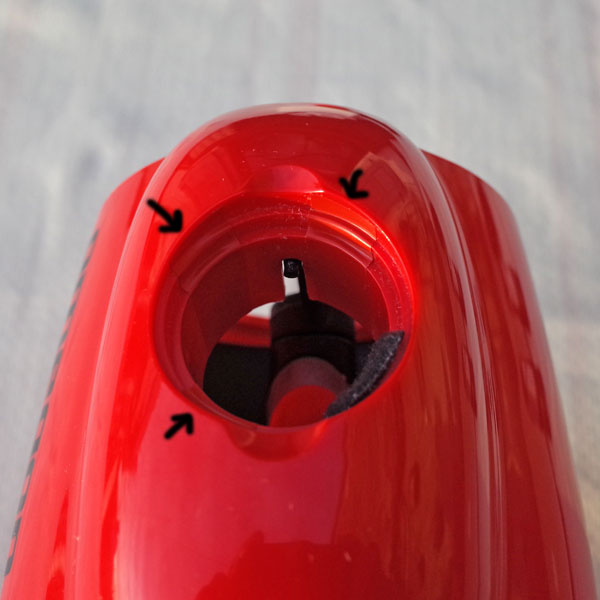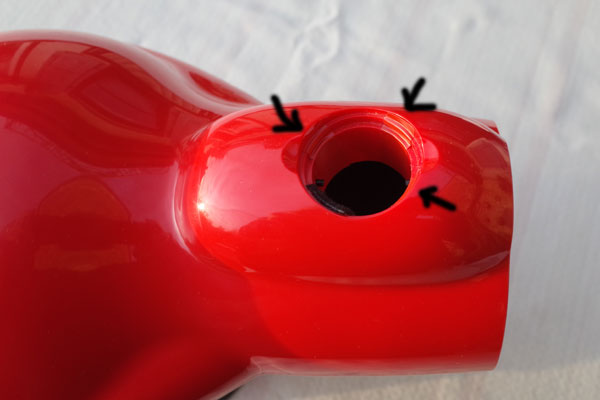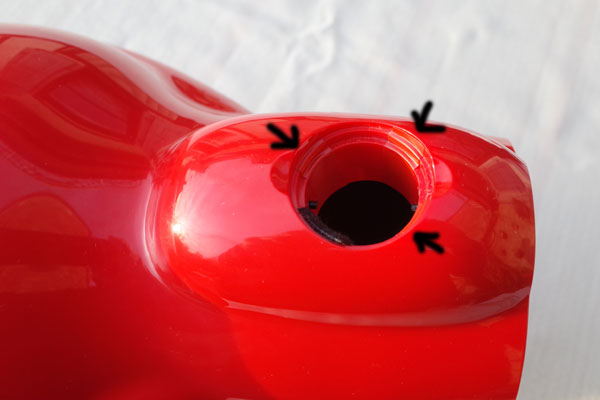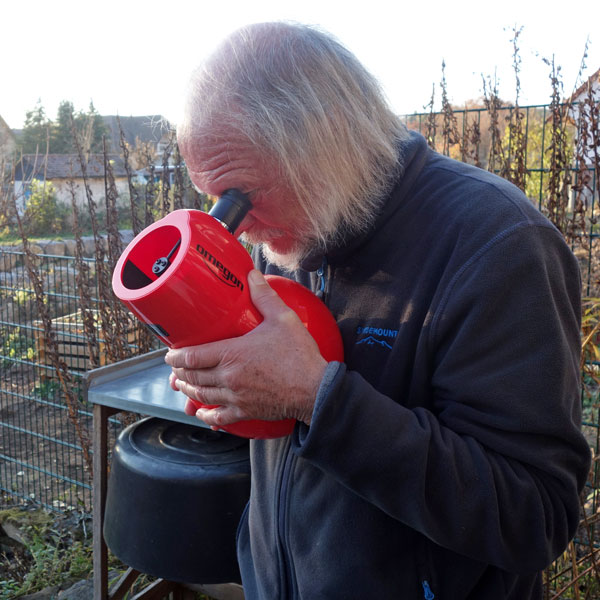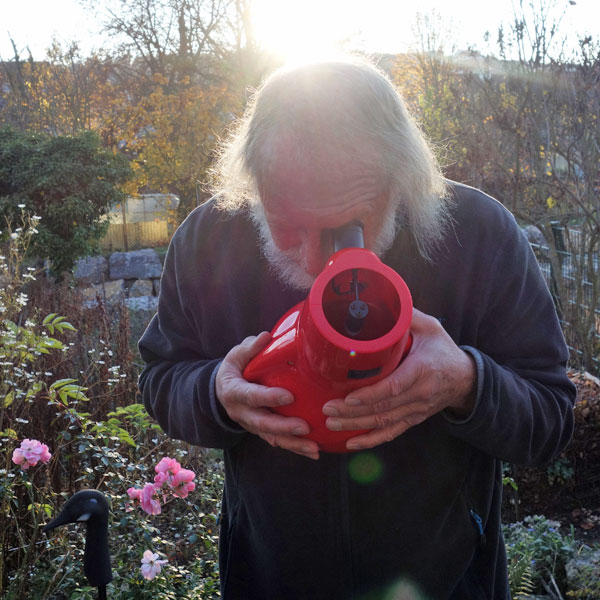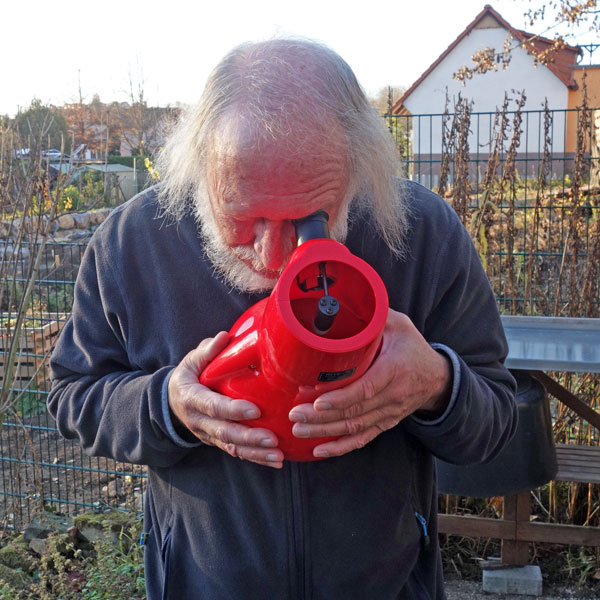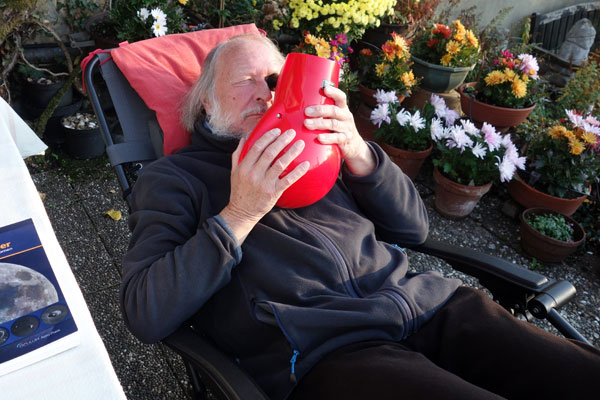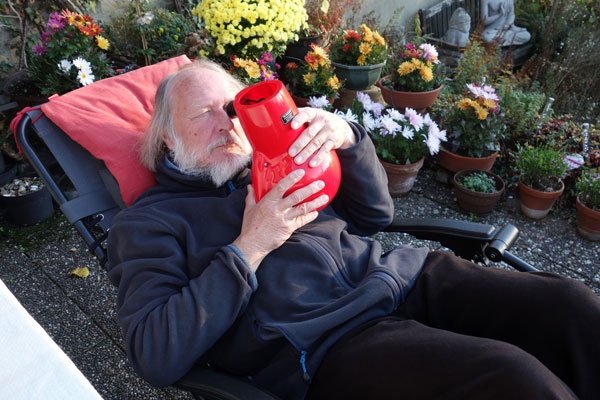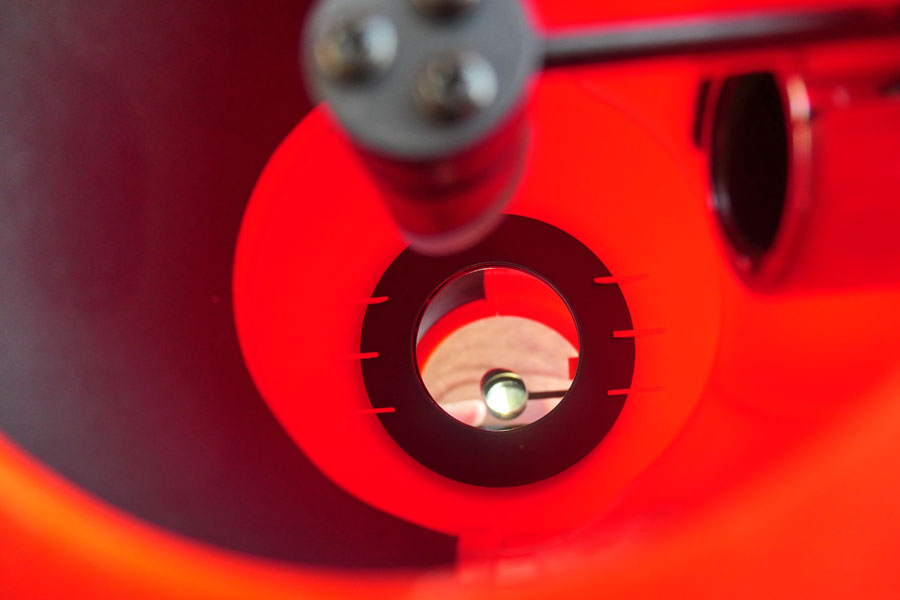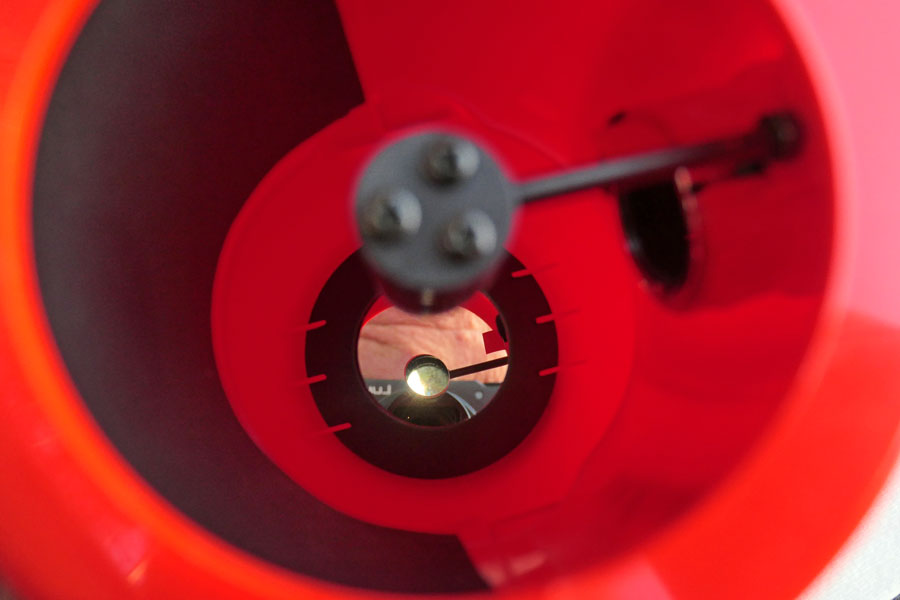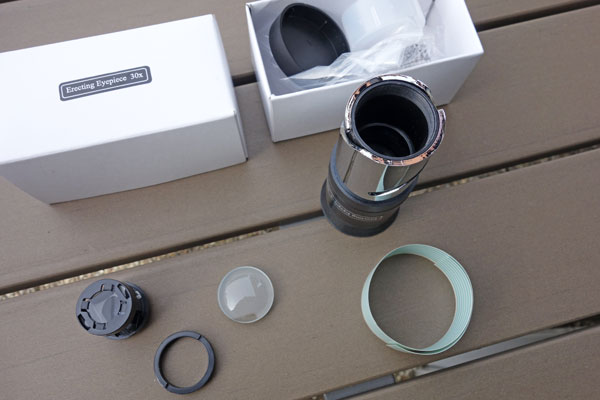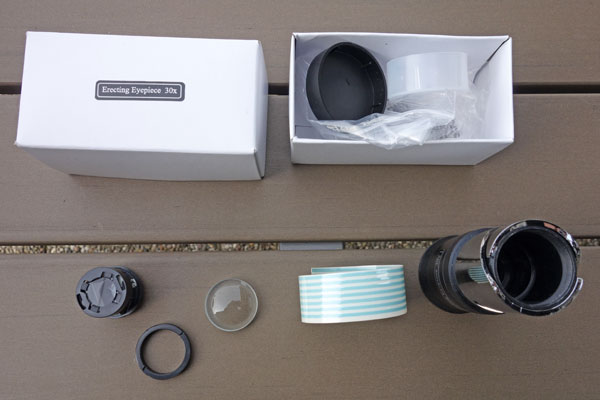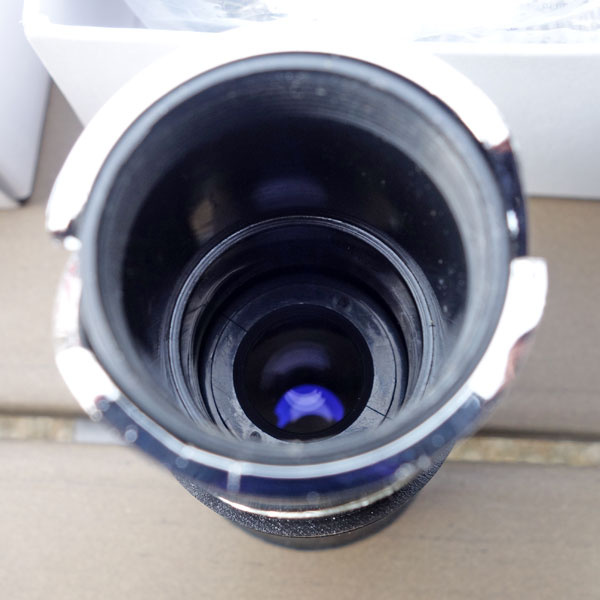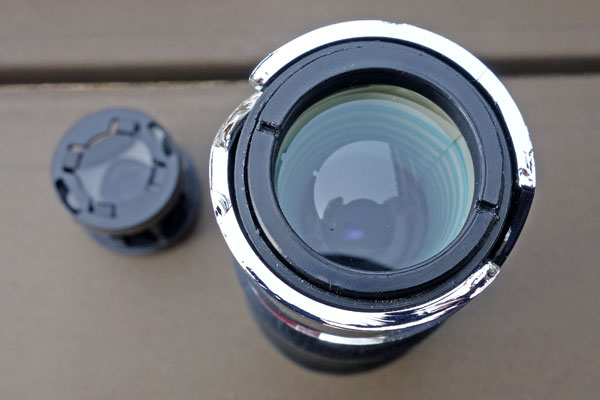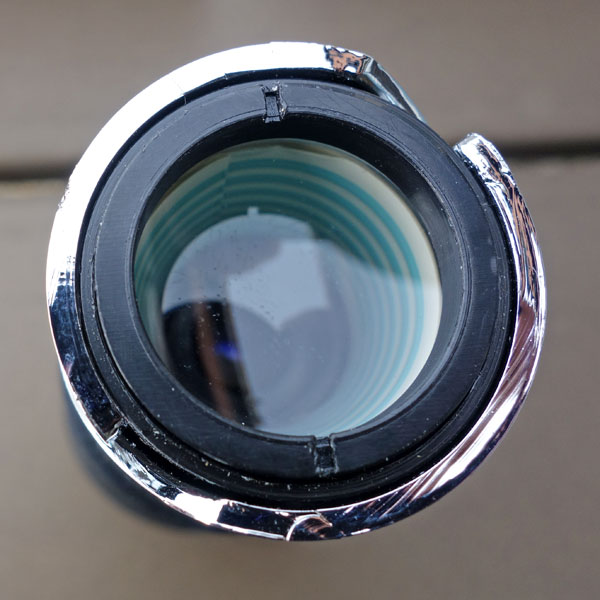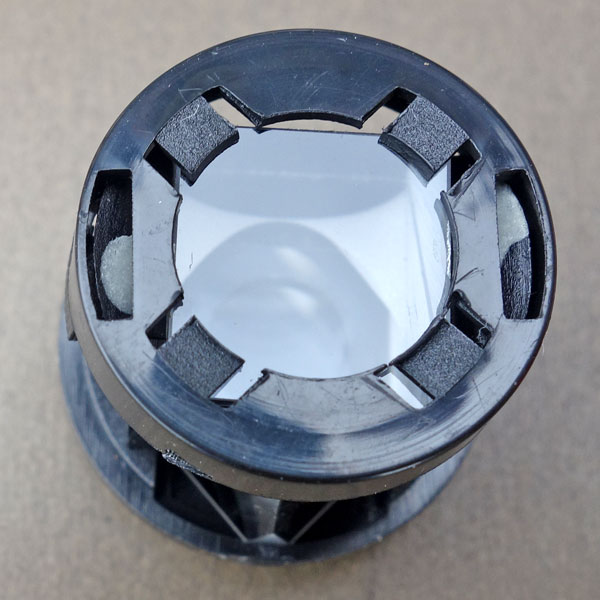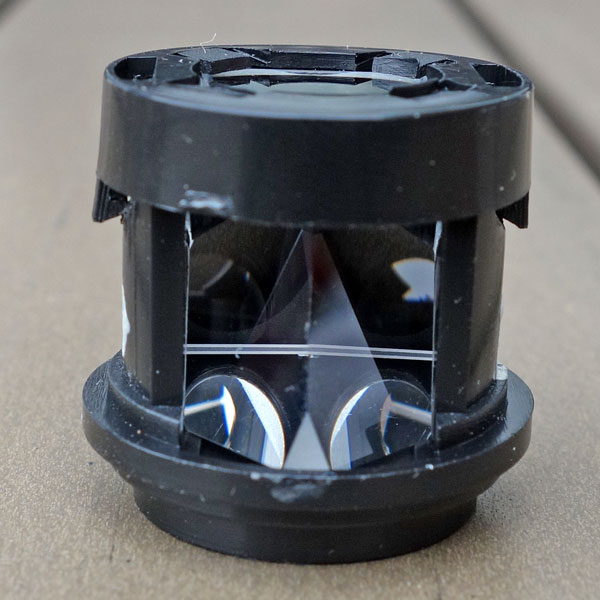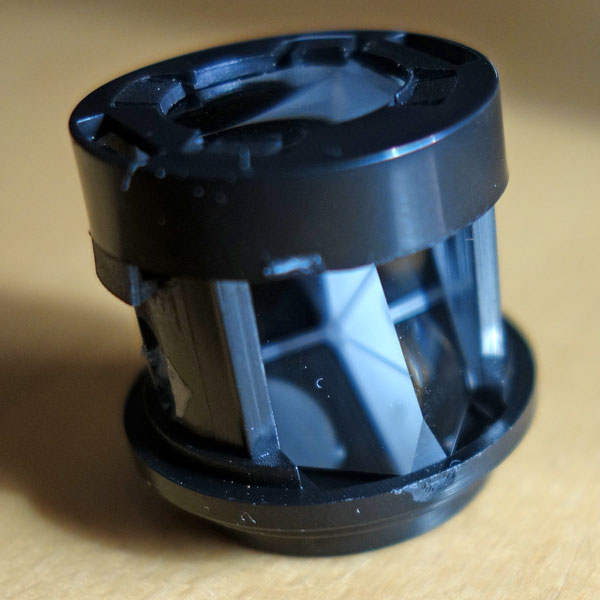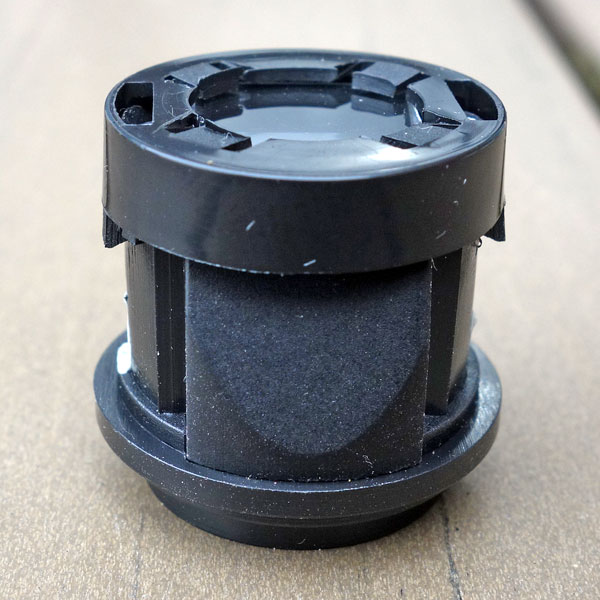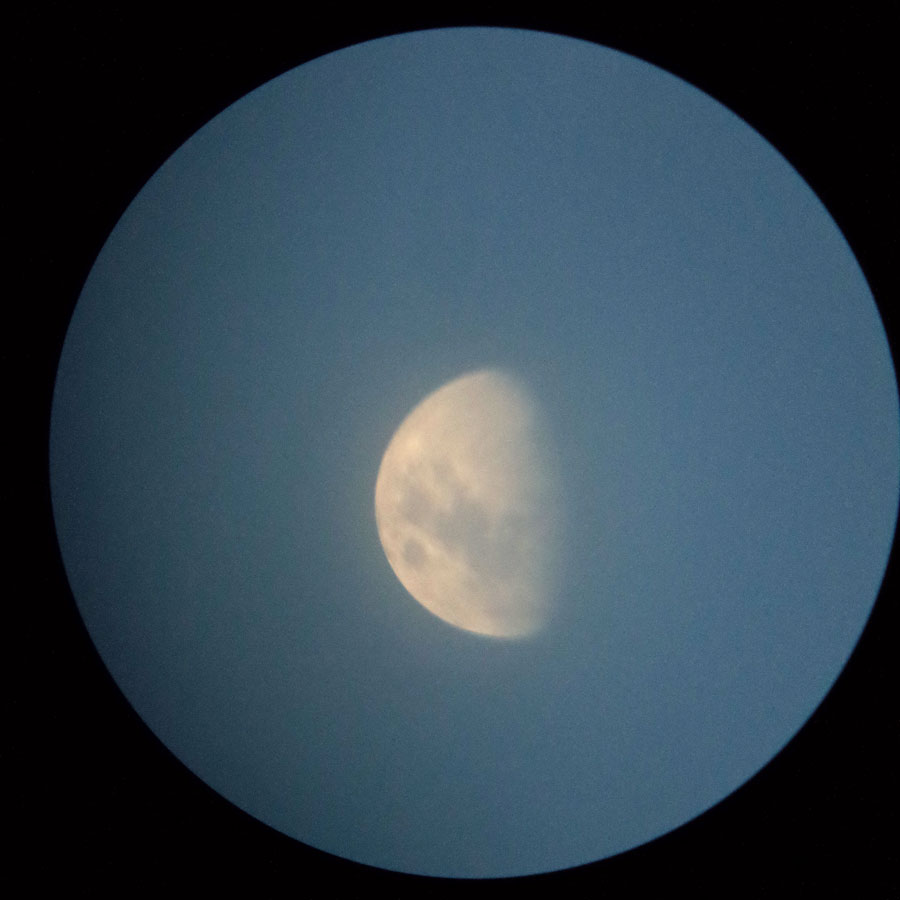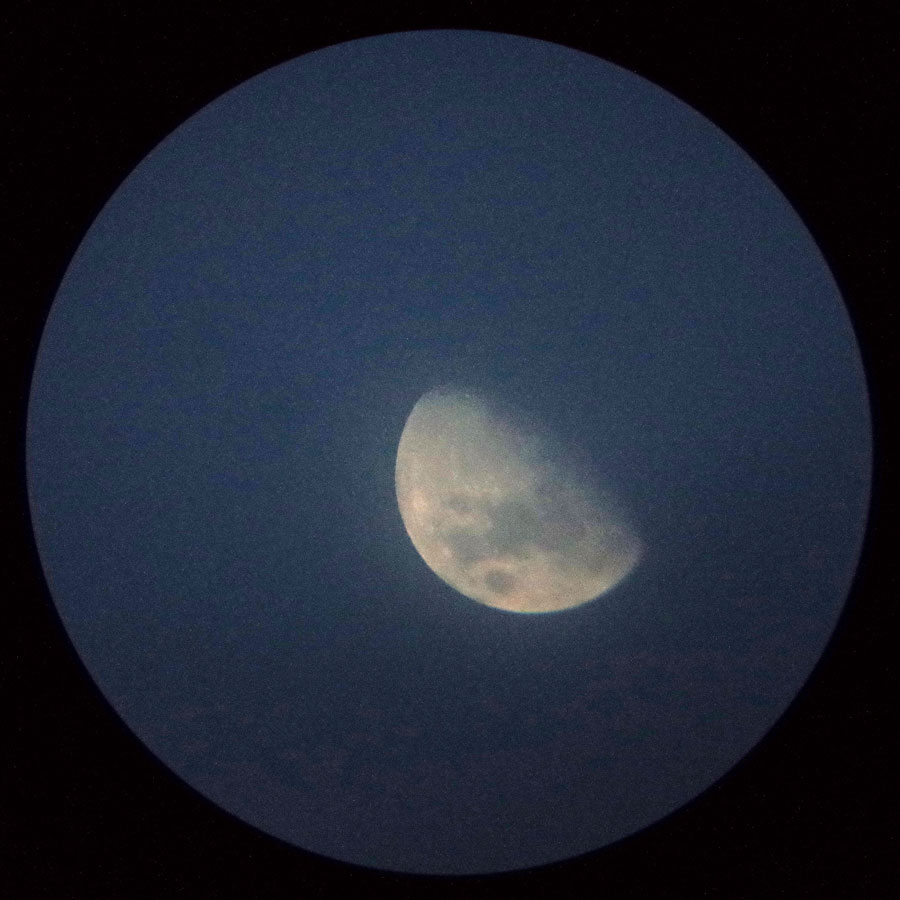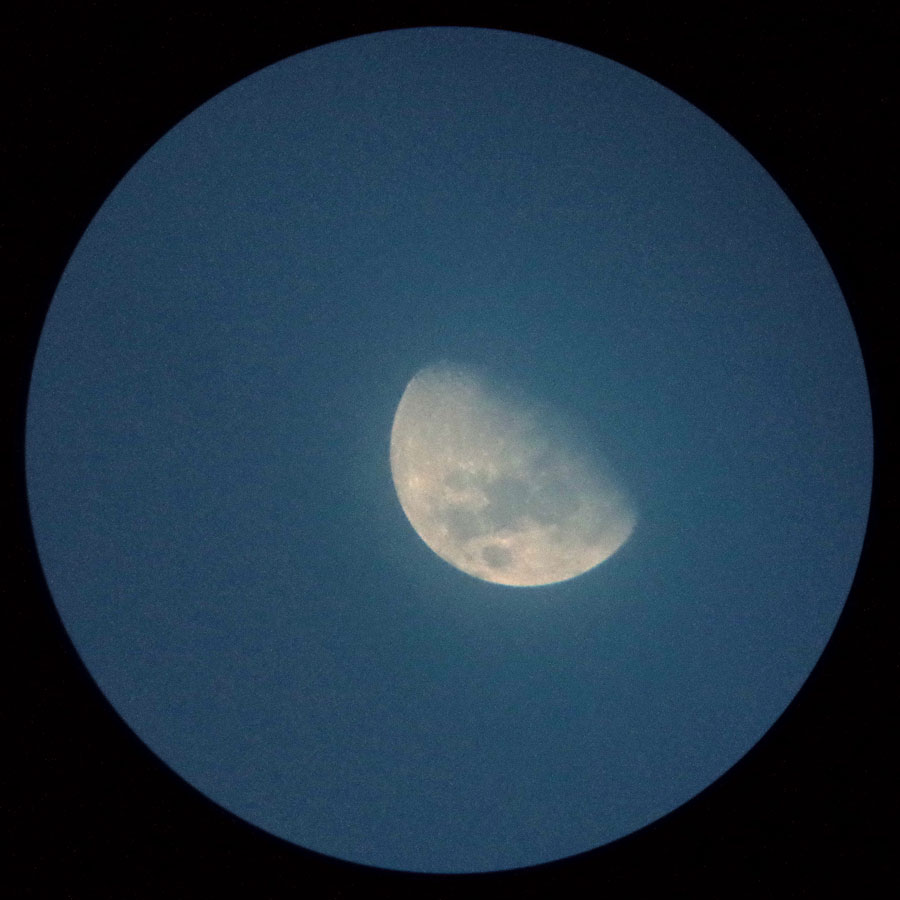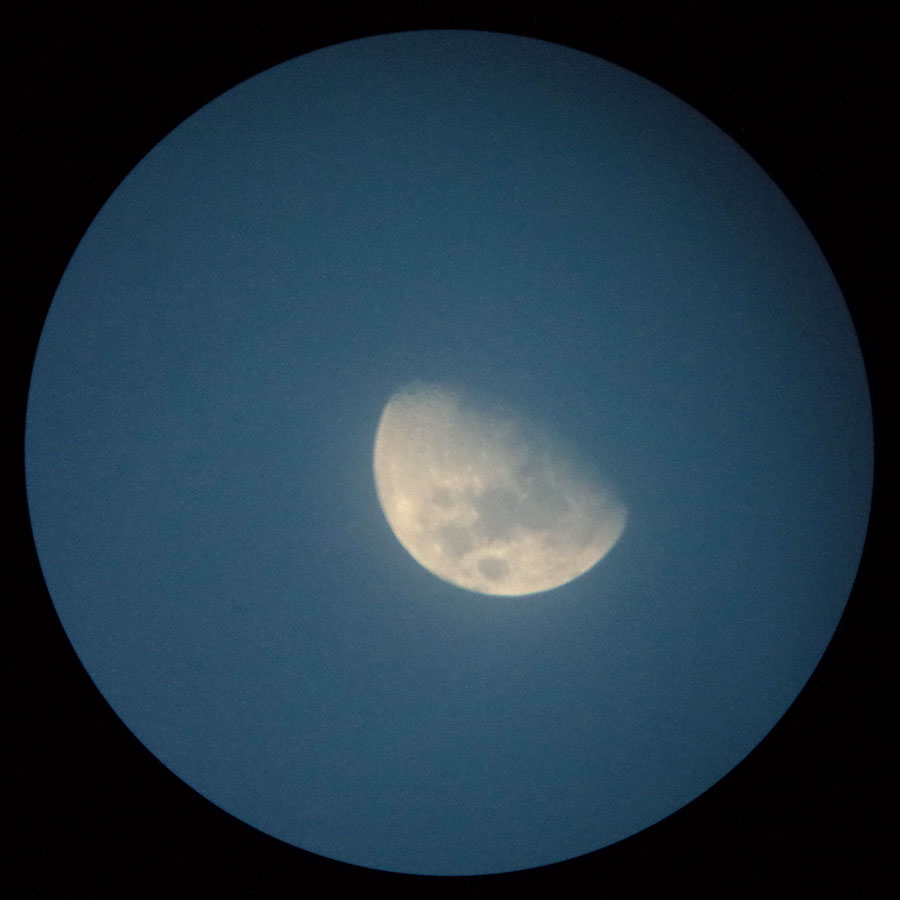Sky-Watcher Infinity 76 Information (3" Dobson)
Look | First Experiences | Visited Sky Objects | First Photo Attempts | Preliminary Conclusions | Links | Appendix: Data
Archive
On this page, I present some information about the Omegon 76/300 telescope (purchased at the end of February 2017), which is more or less identical to the Sky-Watcher Infinity 76 telescope. See the appendix for the data.
By the way, this telescope is a (poor?) imitation of the famous Astroscan telescope by the Edmund Scientific Corporation, which was manufactured from 1976 to 2013. The "mastermind" behind this special telescope was Norman Sperling, who tried to revive the telescope, now called Bright-Eye, in a Kickstarter campaign in 2016 (see references below).
| Note: I gave the telescope away to children in January 2019 and therefore can no longer report in it here. |
Look
Unpacking and Assembling
|
Outer box |
Outer box opened |
Box taken out of the outer box |
|
Box seen from the side... |
...and from the other side |
Information texts |
|
Ditto |
Box opened |
Telescope visible |
|
Box emptied |
Telescope on cradle |
Telescope, 30 x eyepiece and stickers |
|
Eyepiece taken out of its box |
Telescope ready! |
Telescope and Celestron FirstScope 76 |
|
Telescope side view |
Ditto, other side |
Telescope rear view |
|
Telescope front view |
Secondary mirror |
Secondary mirror seen in the primary mirror |
|
Secondary mirror mirrored in the primary mirror |
Primary mirror and its fixation |
Primary mirror and its fixation |
|
View into the telescope |
Light protection for the secondary mirror |
Look into the eyepiece holder |
|
Ditto |
Ditto |
30 x erecting eyepiece |
|
Ditto |
15 x eyepiece (bought additionally) |
Telescope with cover, side view |
|
Telescope with cover, seen from other side |
Telescope with cover, front view |
"Cradle" |
|
Telescope standing upright |
Telescope with "light protection" |
Ditto |
First Experiences
In the following, I summarize some initial experiences with the Omegon / Sky-Watcher Infinity 76 telescope.
Eyepieces
The Sky-Watcher Infinity 76 telescope is being delivered with a 30 x eyepiece. Apparently, two eyepieces were supplied some time ago, the second one was a 15 x eyepiece. Such an eyepiece with its larger field of view makes it much easier to find objects in the sky, because the Infinity 76 does not have a finder. At Astroshop.de, where I bought the Omegon version of the Infinity 76, I still found a reference to a 15 x eyepiece and ordered it as well - unfortunately only after I had ordered the telescope. So I had to pay for shipping a second time...
The big question for me was now: How good are these eyepieces? To answer the question, I compared the eyepieces with other simple eyepieces using a borrowed Celestron FirstScope 76, because, on the Infinity 76, I can only use its own eyepieces. I summarized my results, which should not be taken too seriously, in the following table:
| Sky-Watcher Infinity*** | Sky-Watcher Standard (Kepler?) | Plössl Revelation | Celestron (Huygens/Ramsden?) | Sky-Watcher Infinity (Plössl?) | Sky-Watcher Standard (Plössl?) | Plössl Revelation | |
| Magnification/ Focal Length |
Higher Magnification, Narrower Field
of View |
Lower Magnification, Wider Field of
View |
|||||
| 30 x | 10 mm | 12 mm | 20 mm | 15 x | 25 mm | 20 mm | |
| Angle of View | medium | medium | large* | small | medium | medium | large |
| Contrast | low | mediocre | fairly high | medium | medium | fairly high | high |
| Brightness | mediocre | medium | high | medium | medium | higher | high |
| Sharpness | mediocre | medium | very good | good (at the center) | good (at the center) | good (at the center) | very good |
| Details** | mediocre | medium | good | medium | medium | fairly good | good |
*) large = like a Plössl eyepiece (50-52°); medium = like a Kepler
eyepiece (about 40°); small = like a Huygens/Ramsden eyepiece (about 30°);
in general, the angle of view seems to be smaller for shorter focal lengths
than for larger focal length, but I do not know the reason for this
**) observed using the face of a distant clock
***) with erecting lens
In general, I find it difficult to conduct such comparisons between eyepieces. All my assessments are subjective, only relative to the other eyepieces and should be taken with a grain of salt. They are only meant as an aid for a course rating of the quality of the eyepieces. For evaluating the recognition of details in daylight, I used the face of a wall clock, which was located in a house far away. It showed (and in other comparisons as well...) that less magnification itself rather than contrast and perhaps detail sharpness help in the recognition of fine details.
All in all, in this comparison the Infinity eyepieces fare even worse than the eyepieces that Sky-Watcher delivers with its telescopes as standard (and which accumulate at my home...). I only would rate the Celestron eyepieces lower because of their small visual angle, their low contrast, and their low brightness (sharpness at the center is OK, and therefore you can use them at night).
Because the telescope is mainly targeted at children, the 30 x eyepiece is of an erecting type. Many posters on the Internet, however, found this disturbing and made this responsible for the poor performance of the eyepiece. In addition, the eyepiece magnifies quite a lot, making it difficult for children (and adults) to find objects in the sky without having a viewfinder at their disposal. The 15 x eyepiece would be ideal, its quality is better than that of the 30 x eyepiece, but the image is upside down and therefore it is probably not supplied as standard. Thus, both eyepieces behave differently when you are looking for sky objects. This is a great obstacle not only for children, but also for me. Personally, I would prefer both eyepieces to show the image upside down so that they behave the same, because I have become used to this over the years. With the erecting eyepiece I have my problems, though... Therefore, and not only because of this, I altered the eyepiece and removed the reversing prism. Read more below.
Even more important for me is the fact that Sky-Watcher has devised a special focusing mechanism that prevents other 1.25 "eyepieces from being used on the Infinity telescope, although they would actually fit. More on this below...
Focusing
I had already read in an Amazon review that a buyer found the focusing of the telescope unacceptable. As soon as he released the eyepiece (when turning it for focusing by hand), the focus changed because the eyepiece was too loose in the tube. When I myself held the telescope in my hands, I could only but confirm his opinion and experience. The eyepieces have a helical cutout that slides in two guides. By turning the eyepiece you focus the telescope. The insert is lined with fabric tape (a kind of fleece) to make the movement softer. And these are my problems with this solution:
- Inserting eyepieces is tedious. You have to orient the eyepiece correctly so that it can be easily inserted and then turned for finding the focus. In the dark, I never succeed with this.
- Correspondingly, changing eyepieces is troublesome and, above all, I cannot do this without, against my will, loosing the position of the telescope, which is difficult to find again. So if I start with the 15 x eyepiece to find the object and then switch to the 30 x eyepiece, I usually lose the correct position. How will children get along with this?
- Focusing is absolutely fiddly, and the exact focus point is difficult to find.
- The focus is shifted at the slightest touching of the eyepiece.
All in all, I can only call this focusing mechanism "useless," and I do not believe that children will have the patience to succeed with it... Surely Sky-Watcher wanted the focus mechanism to be as simple as possible, and that would be the case if it worked properly - but it does not. A similarly simple focus mechanism would have been achieved with the principle used in the Heritage P130. There, a tube is used, into which the eyepieces are clamped, and this tube rotates in a helicoil gear in the eyepiece tube. This solution is not ideal either, but it would have made it possible to use more and better eyepieces.
Improving the Focusing - Plan A
To improve the item "the focus is shifted at the slightest touching of the eyepiece" above, I did something meant to ensure that the eyepiece does not sit quite as shaky and loosely in its guide. This unfortunately makes it more difficult to insert and exchange the eyepieces, but I believe that the benefit of this solution is nevertheless greater than its disadvantages.
At first I considered sticking small felt discs to the inner side of the ocular tube, namely to the opposite side of the two black tissue bands that are supposed to produce the friction when focusing. But already thinnest felt discs were too thick, so that they were damaged the moment the 15 x eyepiece was inserted. Then I browsed my adhesive tape supplies and came across an ancient red insulation tape from Tesa. I glued two strips to the inner tube and turned them over at the inner ends. The following photos are meant to illustrate my "repair" (unfortunately the tape fits so well in color to the telescope that you can hardly see it):
Now the 15 x eyepiece fitted somewhat tightly (to a different degree during focussing...), but the focus was no longer shifted by the slightest touch. Regrettably, the 30 x eyepice still had a lot of slack but, at least, focusing was better than before the change.
In a test, I found that the telescope could be better focused now, but already slight touches of the eyepiece shifted the focus point. This is especially troublesome when you have to take the 1: 50 method and keep the camera close to the eyepiece. Therefore, I decided to "repair" the 30 x eyepiece, too. Because because the 15 x eyepiece was already a tight fit, it was not possible to narrow the eyepiece tube any further. In other words, I had to make the eyepiece sleeve "thicker." Tthis was, however, somewhat difficult because of the helicoil guide in the sleeve.
My solution was to stick two strips of plastic insulation tape parallel to the helicoil guide onto the eyepiece sleeve:
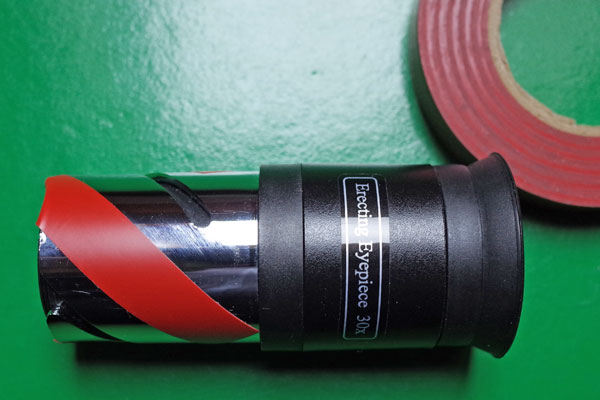 |
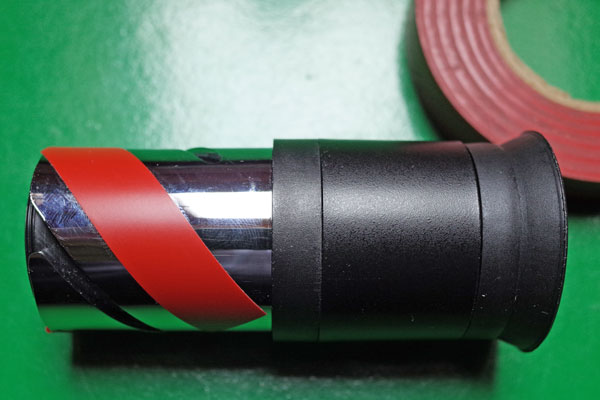 |
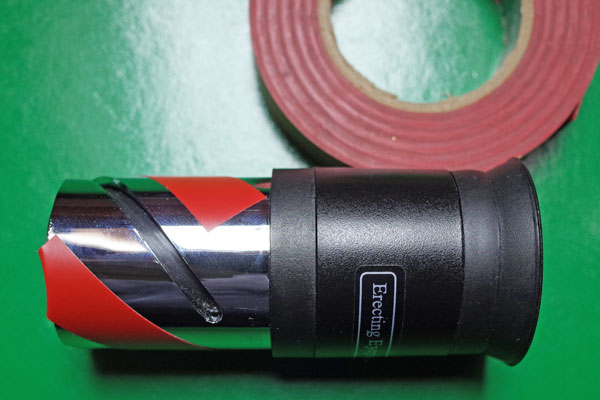 |
With this solution, the 30 x eyepiece now sits firmly in the ocular tube. How long the adhesive strips will hold is, however, open (this also applies to the adhesive strips in the eyepiece tube). But I still have enough of the tape left...
Improving the Focusing - Plan B
Plan A worked, but the two eyepieces had to be treated differently. By chance, I met someone who used Velcro tape in his VW bus and gave me a piece of it. This opened up the possibility for a second attempt called "Plan B." The Velcro tape was, however, thicker than the textile tape used in the telescope, and when I glued two strips of the Velcro tape where the two plastic insulation tape strips were located, it became so tight for the eyepieces that the orignal textile tape was damaged by the eyepieces. I therefore removed the textile tape strips and one of the two Velcro strips, removed the remaining glue as much as possible, and tried out the eyepieces with only one Velcro tape strip. This worked amazingly well with both eyepieces. However, since the eyepieces scraped at the ocular tube, I added three strips of plastic insulation tape to allow the eyepieces to slide better. This solution works for both eyepieces, so I do not need the extra adhesive strips for the 30 x eyepiece. How long this solution will work well is, of course, open ...
|
The Velcro tape is at the top left, the three stripes of plastic insulation tape are indicated by arrows. |
Ditto |
Ditto, other side |
|
Ditto, other side |
Ditto, enlarged a little bit |
Aligning to Sky Objects
The Infinity 76 telescope does not have a finder and also not a "classical" base or mount. It rests in its "shell" and is aligned by moving the tube around. This principle was adopted from the Edmund Scientific Astroscan telescope. Since I had learned this from the Internet, I was more or less aware of what I was getting into when I bought the telescope, but, of course, I did not know, whether I would indeed be able to manage this. After my first experiences with the Infinity 76, I can say that this is feasible for simple objects (moon, planets, seven sisters, ...) at 15 x magnification, but at 30 x magnification aligning becomes more difficult. Of course, you might search with the 15 x eyepiece first, and then switch to the 30 x eyepiece - that is how you do it with normal telescopes. But when changing from 15 x to 30 x, I have to use so much force (especially since I made the eyepiece holder tighter), that the telescope slips and I usually lose the object that I had found with the 15 x eyepiece...
After buying a 15 x eyepiece, I also noticed that I was less comfortable with the uprighting 30 x eyepiece when aligning to celestial objects than with the "normal" eyepiece. That was probably the power of habit... Therefore - and not only therefore - I soon altered this eyepiece and removed the reversing prism. More about this below.
The bearing of the telescope in a shell is actually very stable and does not tremble like some small Dobsonian bases (but the table on which the telescope stands may tremble...). I think this kind of "mount" is really ingenious. Alignment is nevertheless difficult because the Infinity 76 has no viewfinder whatsoever.
Like the Edmund Astroscan (and its replica BrightEye) you can also hold the Infinity 76 with your hands and try to align it to sky objects or just "tour" the sky (the Astroscan/BrightEye even has a carrying belt). This is quite shaky when standing, but I have been able to find some sky objects with the 15 x eyepiece in this way (Pleiades, Alpha Persei Cluster, Perseus Double Cluster, Coat Hanger). This probably works better in a recliner, but I have not tried this yet. Altogether, this is a little bit like observing with binoculars, but with the image upside down...
|
Telescope in hands, standing |
Ditto |
Ditto |
|
Telescope in hands, lying |
Ditto |
Ditto |
Mirrors
I read somewhere that the 3" main mirror is parabolic - in contrast to the Heritage / FirstScope / FunScope 76 - but there is no further information about this in the documentation or on the box...
The primary mirror has a lot of room in the "belly" of the telescope. A 4" mirror as used in the Astroscan telescope would probably fit as well...
|
Primary mirror |
Ditoi |
The primary mirror is held by plastic clamps and is probably under tension, as the "multiple" Venus crescents that I can see in the eyepieces suggest (my other "cheap" telescopes show the same phenomenon, but not as bad.) Of course, the primary mirror is not adjustable... I do not know whether it can easily misalign itself as can happen with other Newtons (the Astroscan main mirror was very robust in this respect). Anyway, it cannot be adjusted manually...
The secondary mirror should in principle be adjustable, but I have not yet taken a closer look at this. A respective mark on the primary mirror is missing anyway...
Case
The red plastic case is attractive, and I think so, for children, too. I regard the telescope more as a penguin than as a rocket... But the housing is translucent and thus reduces the image contrast during daylight observations. I therefore put a towel over it... At night, the ambient light will probably not be that disturbing.
Reflexes
When looking through the eyepiece I had a few strong and less strong reflexes in the image at times, which disturb and irritate, of course. I have not experienced this with any of my telescopes. When I used this eyepiece on other telescopes, reflexes also appeared. Since, on the other hand, the 15 x eyepiece, which I bought later and therefore could not try out at the beginning, did not show such reflexes, this suggested to me that the 30 x eyepiece was the cause for the reflexes.
"Modding" the 30 x Eyepiece
As a result, I came up with the idea of unscrewing the eyepiece and removing the reversing mechanism to reduce the number of glass surfaces. The image reversal disturbed me anyway. Since the two eyepieces behaved differently in this respect, I again and again made handling errors. I was able to unscrew the eyepiece at the lower end, and immediately a lens, which was at the end of the eyepiece, fell out of it. As I later learned, this is a Barlow lens.
First I tried to use the eyepiece without the Barlow lens and the reversing mechanism, which turned out to be a prism (see photos below). This worked, however, only in principle, because the telescope could not be fully focused at infinity. Besides, I found magnification lower than originally, but was not able to determine exactly how much. At this time I was not aware that the dispersing lens at the end of the eyepiece is a Barlow lens and thus affects magnification. That is, the two eyepieces might even have the same "original" magnification, and only the Barlow lens would produce the difference factor 2 between them (15 x and 30 x). This would be very "economical" for Sky-Watcher ...
Since focusing was not really possible with this solution and nothing else could be changed on the eyepiece, I decided to reinstall the rear lens. But in this case, there something was missing that would hold the rear lens at the end of the eyepiece in a fix position, since I had remove the reverse prism that performed this task. There was an edge inside the eyepiece, which held the reversing prism in position. This might be used as base for a narrow ring of about 2 cm height I thought. But there was no such a ring in my whole household. I found some rings, though, but only with a diameter of 1.25"... Finally, I discovered a flexible ribbon cable in my electronic stuff, which I rolled up and slightly cut in height. So this was transformed into the desired "spacer." Actually, I would have to paint the inside black, to preserve eyepiece contrast, but regarding the low sharpness of the eyepiece I dispensed with it...
Tests at daytime were not convincing as to sharpness, but reflexes seemed to have vanished. Another test of the eyepiece on the moon, also using another telescope, also did not show any reflexes, and the image of the moon was OK. Thus, I will leave it "as is" for the moment...
The following photos show some details of the "conversion" and of the reversing prism that I removed:
|
30 x eyepiece "in pieces"; bottom left: reversing prism, fixing ring and dispersing lens |
Ditto; bottom: the ribbon cable that I used as a spacer |
Ditto |
|
"Empty" eyepiece from the back; the small edge stops the "spacer" cable after the "mod" |
Ribbon cable used as a spacer, Barlow lens fixed provisionally |
Fixing ring screwed on |
|
Ditto, detail view |
Erecting prism from above |
Erecting prism from below |
|
View of the prism |
Ditto |
View from the back |
Visited Sky Objects
So far, I have visited the following sky objects:
- Moon, Jupiter (moons, stripes?), Venus (crescent)
- M 45 (Pleiades, Seven Sisters), Mel 25 (Hyades), M 42/43 (Orion Nebula), Mel 20 (Alpha Persei Cluster), NGC 884/869 (Perseus Double Cluster), St 2 (Muscle Man), Cr 399 (Coat Hanger)
I also propose the following sky objects for observation:
- Moon: Total eclipse of the moon (blood moon)
- Planets: Jupiter with moons, perhaps Saturn (small, but maybe with ring)
- Large star cluster: M 44 (Praesepe), Mel 111 (Coma Berenice star cluster)
- Galaxies: M 31 (Andromeda galaxie; a faint glow at best...)
- Wandering along the Milky Way or other regions with many stars, best done in a rocking chair with the 15 x eyepiece
- Double stars: Alkor and Mizar (Big Dipper); perhaps Albireo (Swan, 30 x eyepiece?)
First Photo Attempts
Beginning of April 2017
Here my first, not really serious photo attempts at the moon (April 5, 2017, Ricoh GR held at the eyepiece, 30 x eyepiece):
And here my best results from this attempt:
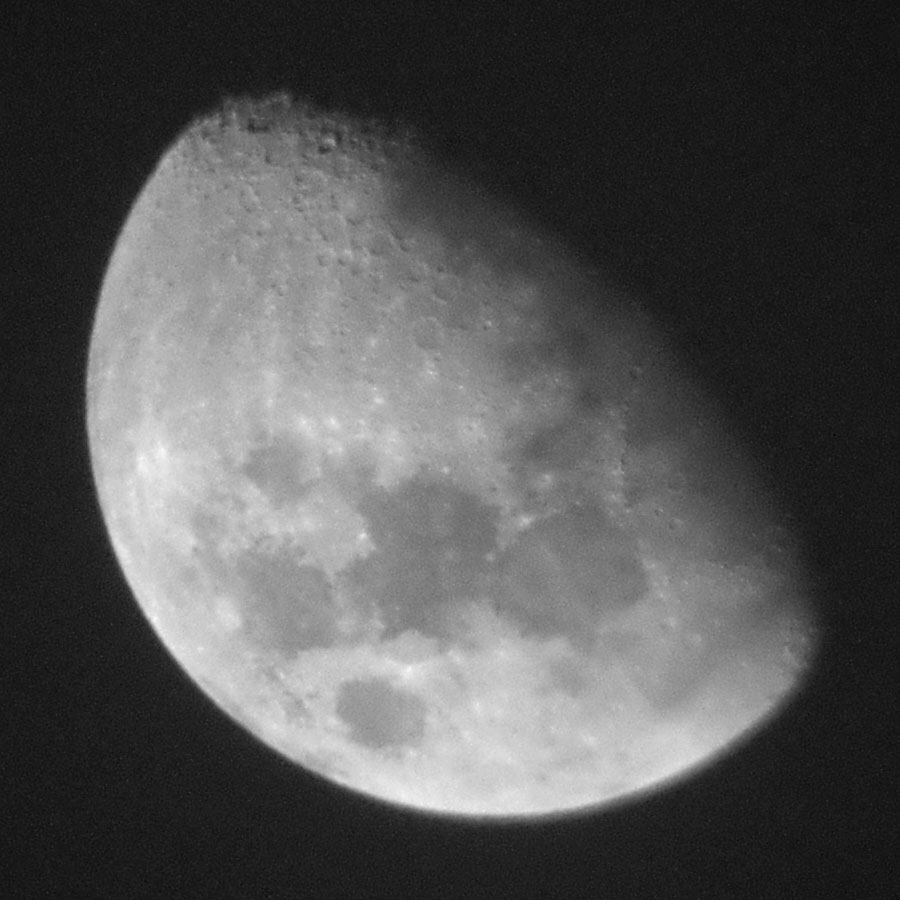 |
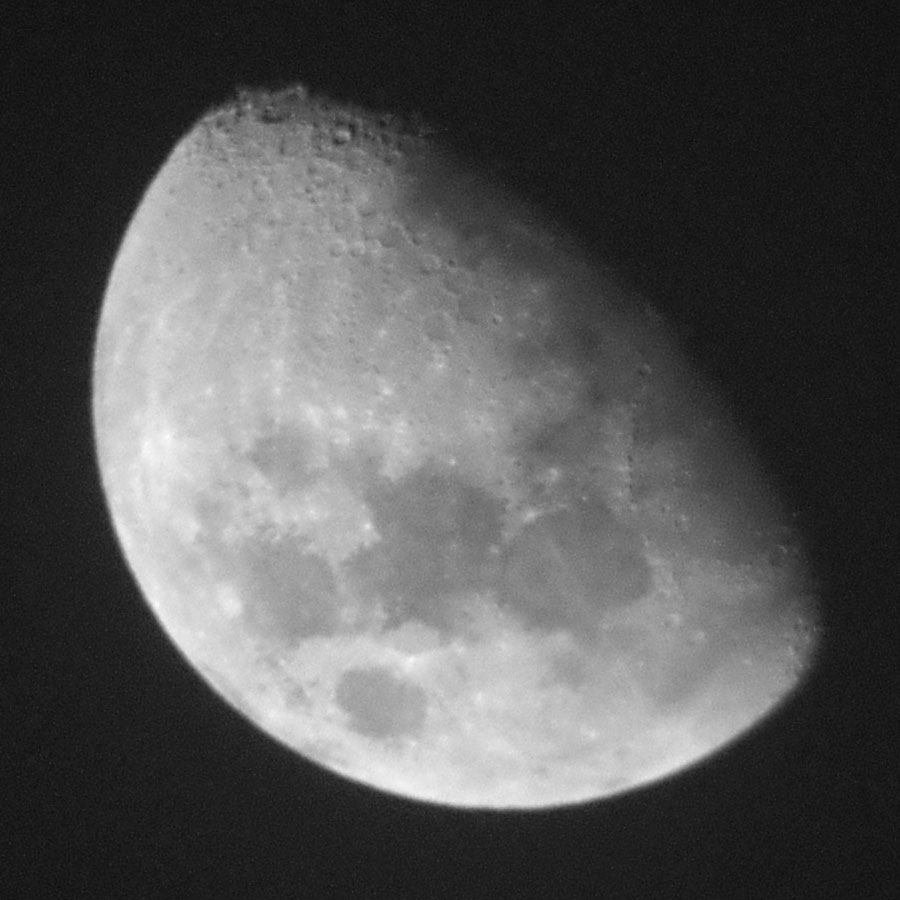 |
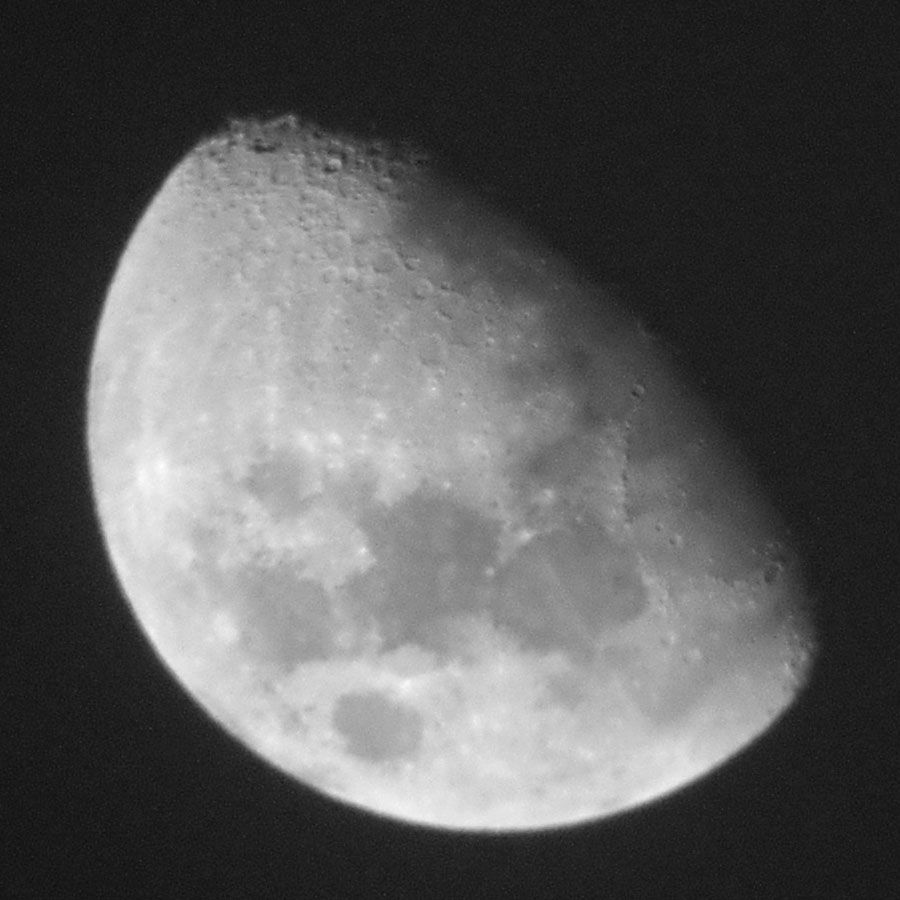 |
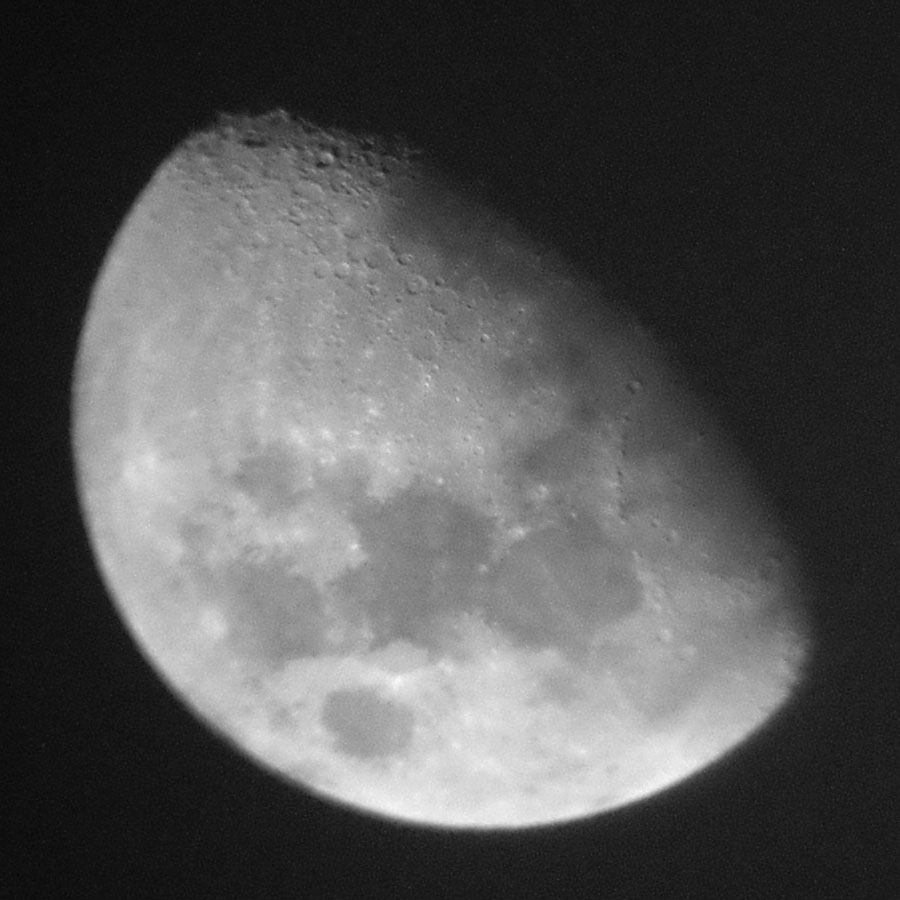 |
The large versions appear after you click the images; they are 100% and appear in a new window/tab.
The moon was affected by clouds and the sky still too bright (at about 8 p.m.).
And here my best results from a second attempt about two hours later:
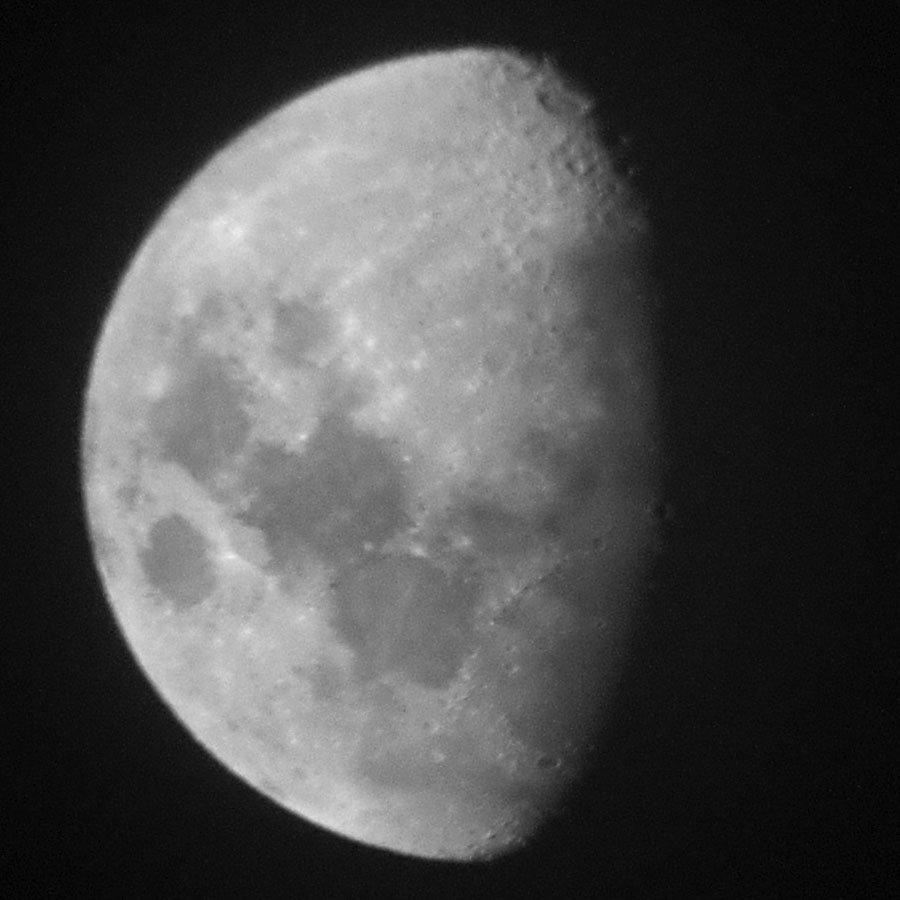 |
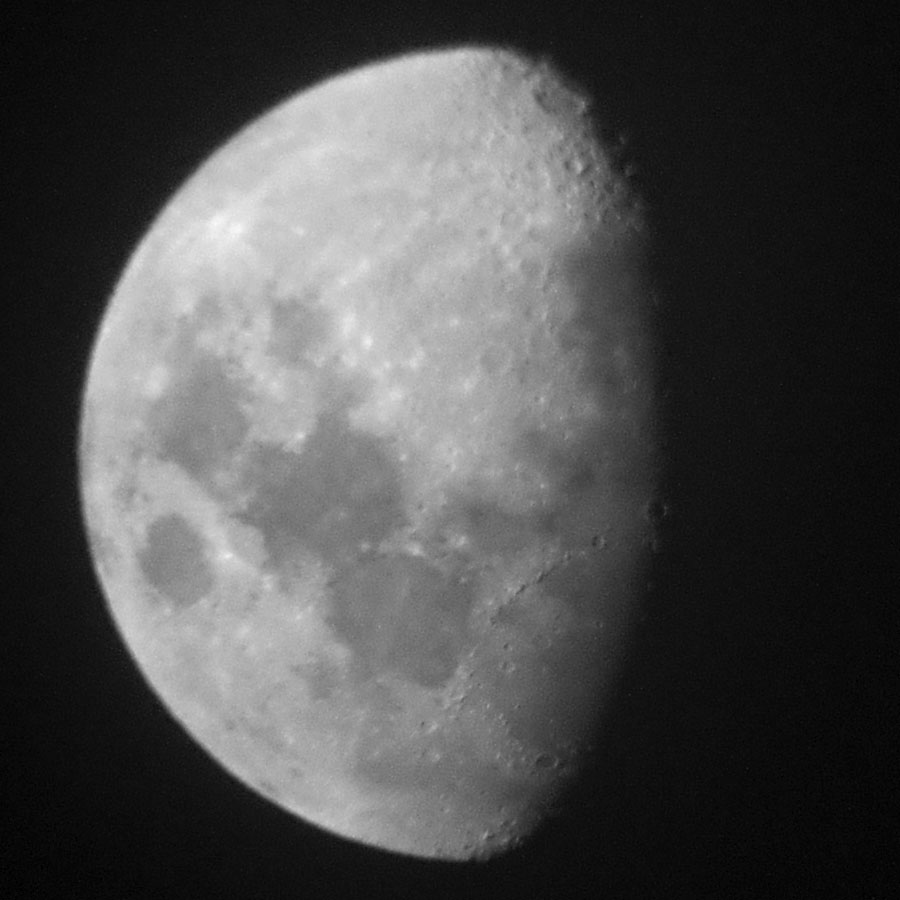 |
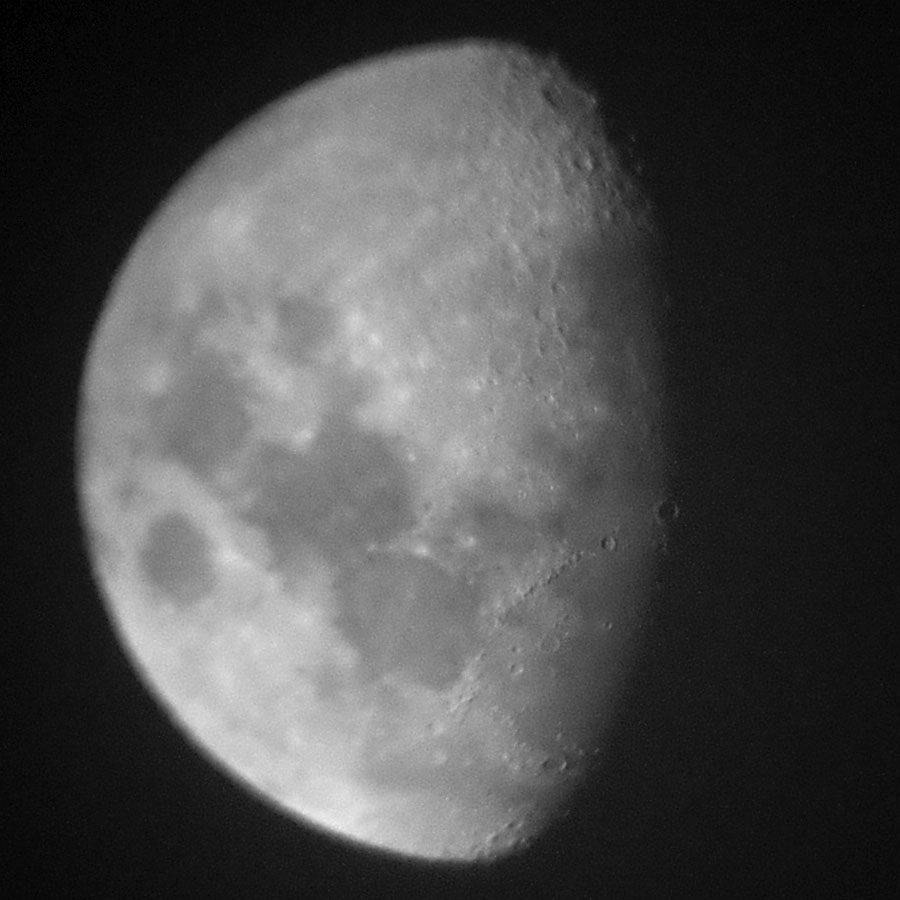 |
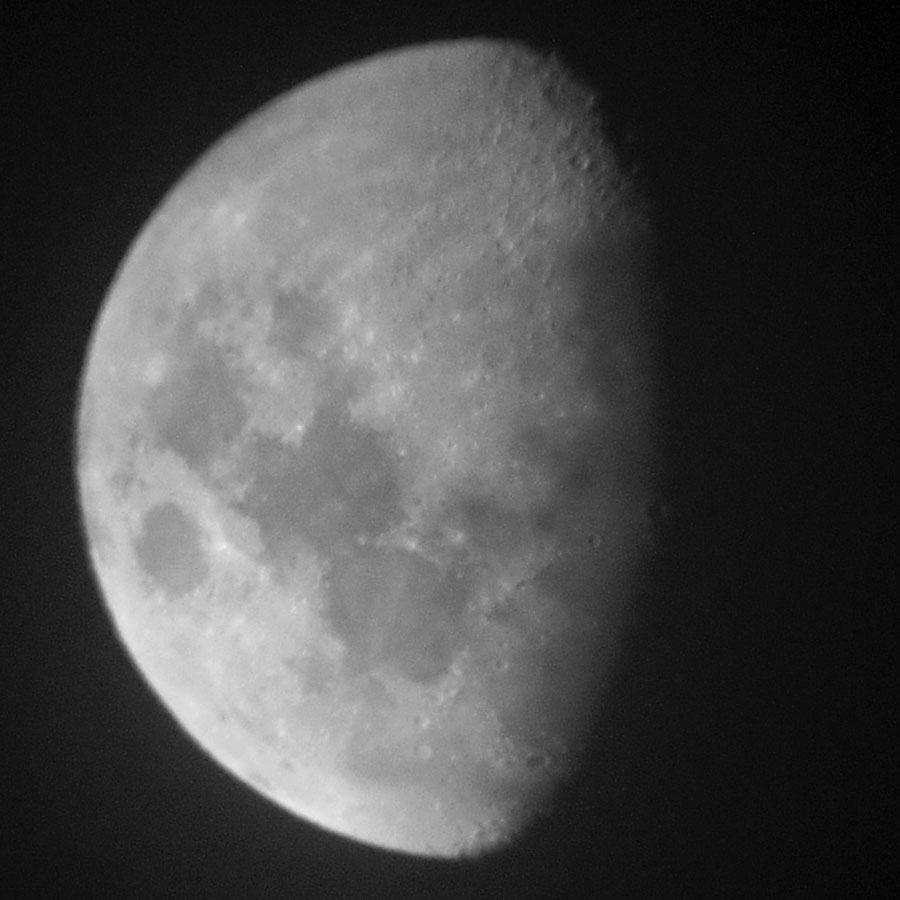 |
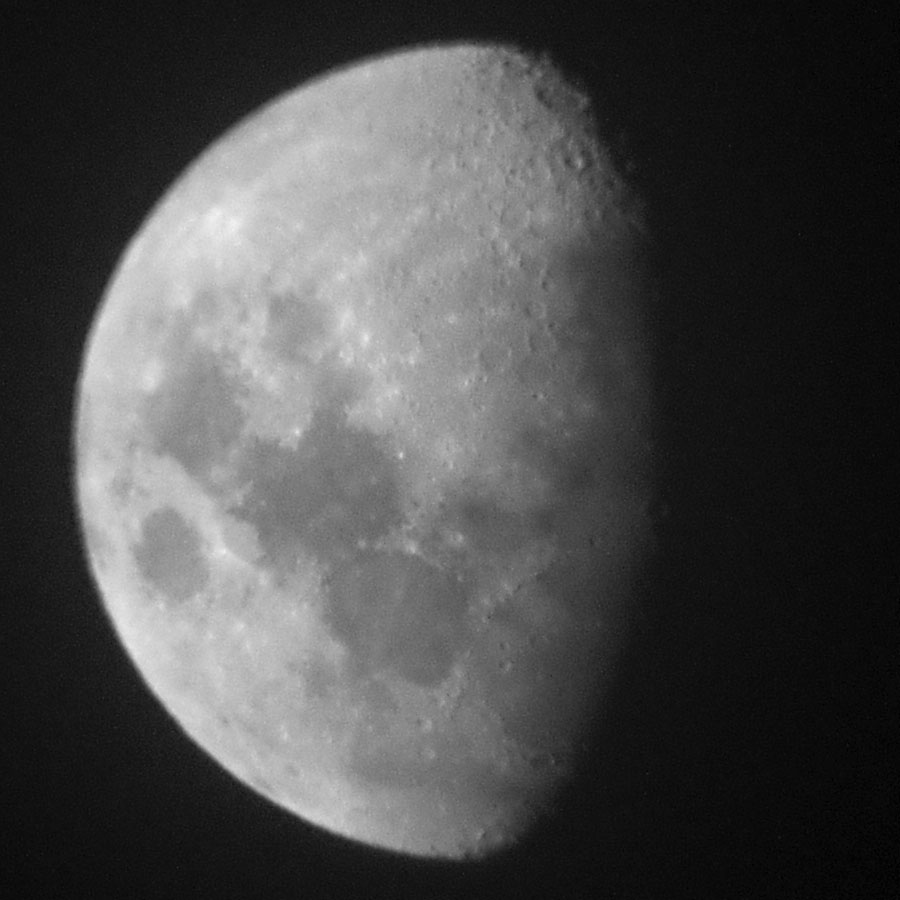 |
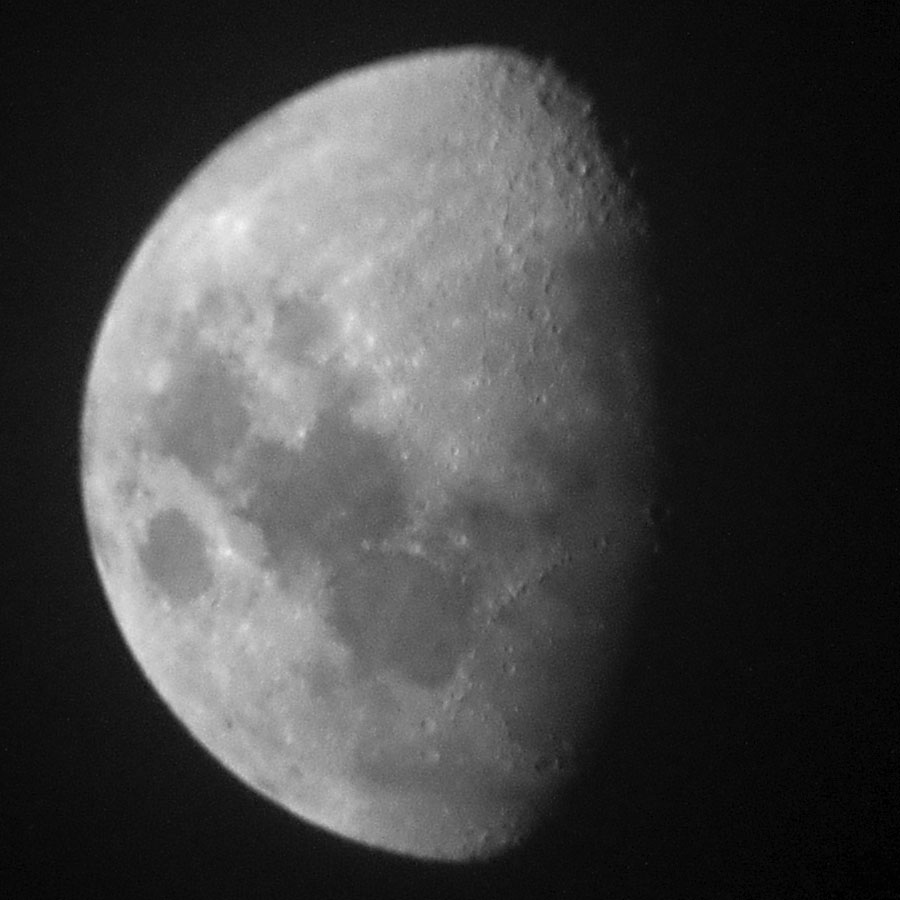 |
The large versions appear after you click the images; they are 100% and appear in a new window/tab.
The moon was affected by clouds (at about 10 p.m.).
The main problem when taking the photos was the difficult focusing and the fact that the focus shifted at the slightest touch of the camera with the eyepiece. I hope that my additional modification of this eyepiece has improved the latter.
Beginning of May 2017
In the following I present further, not really serious photo attempts at the moon (May 3, 2017, Ricoh GR held to the eyepiece, 30 x eyepiece):
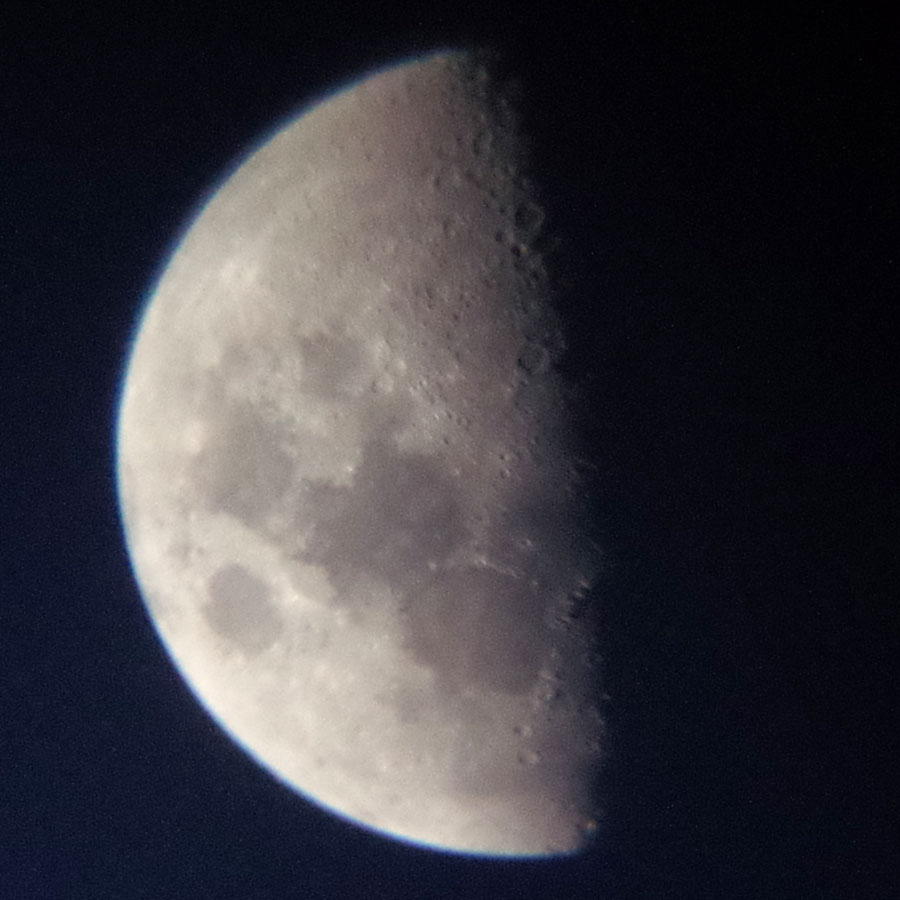 |
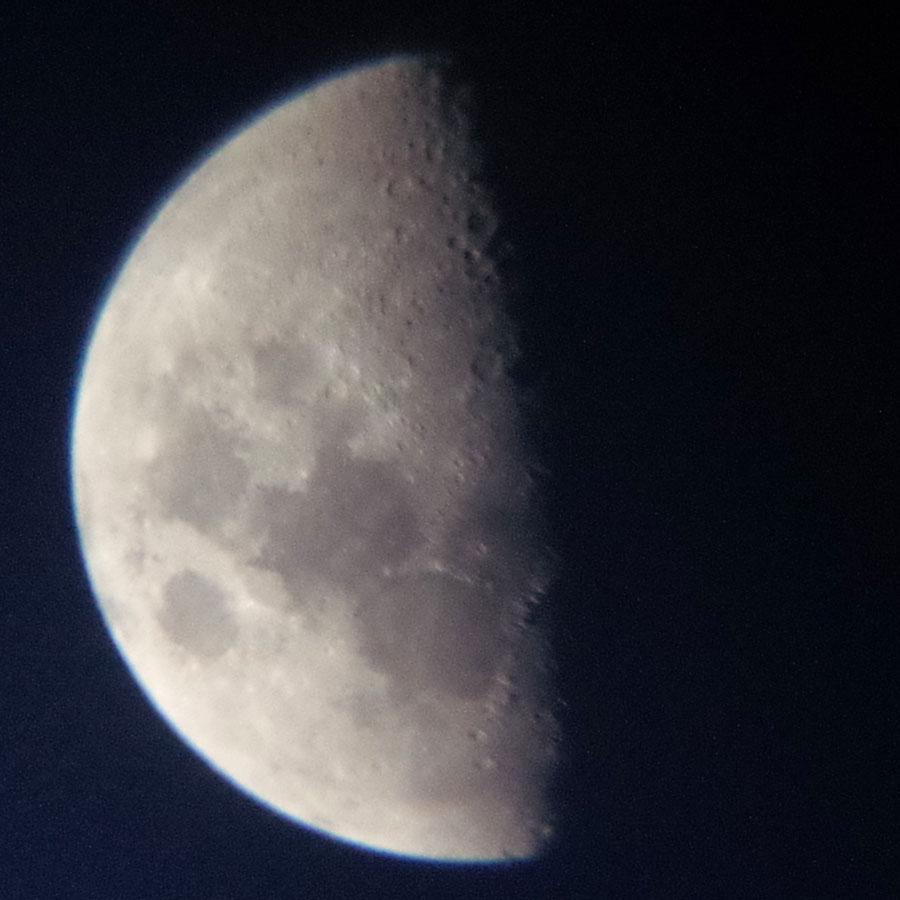 |
 |
Large versions appear after clicking the photos in a new window/tab. |
And now first, not really serious photo attempts at Jupiter (May 3, 2017, Ricoh GR held to the eyepiece, 30 x eyepiece):
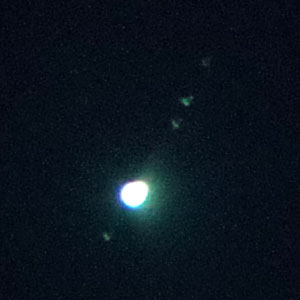 |
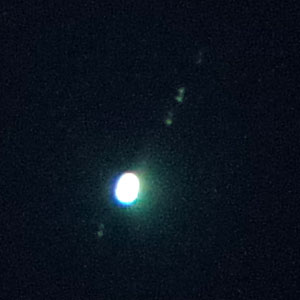 |
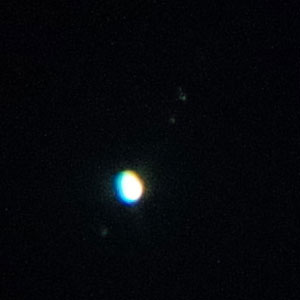 |
November 2018
Further, not really serious photo attempts at the moon (November 17, 2018, Sony RX100 M4 held above the eyepiece, 30 x eyepiece):
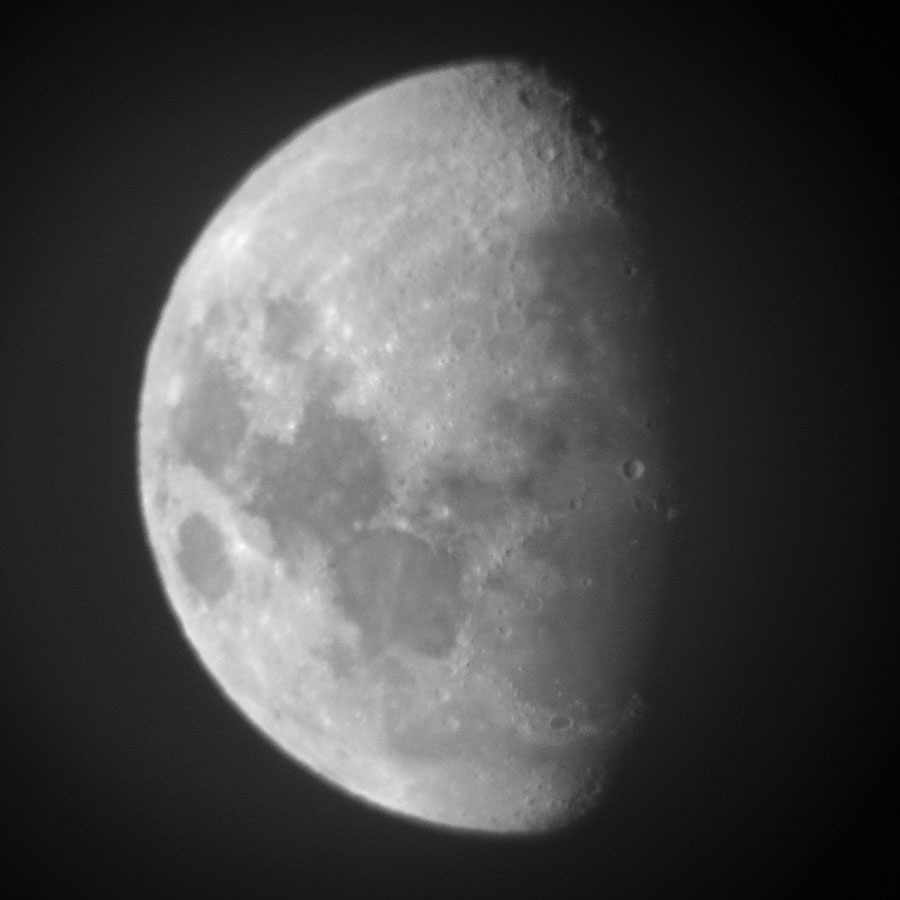 |
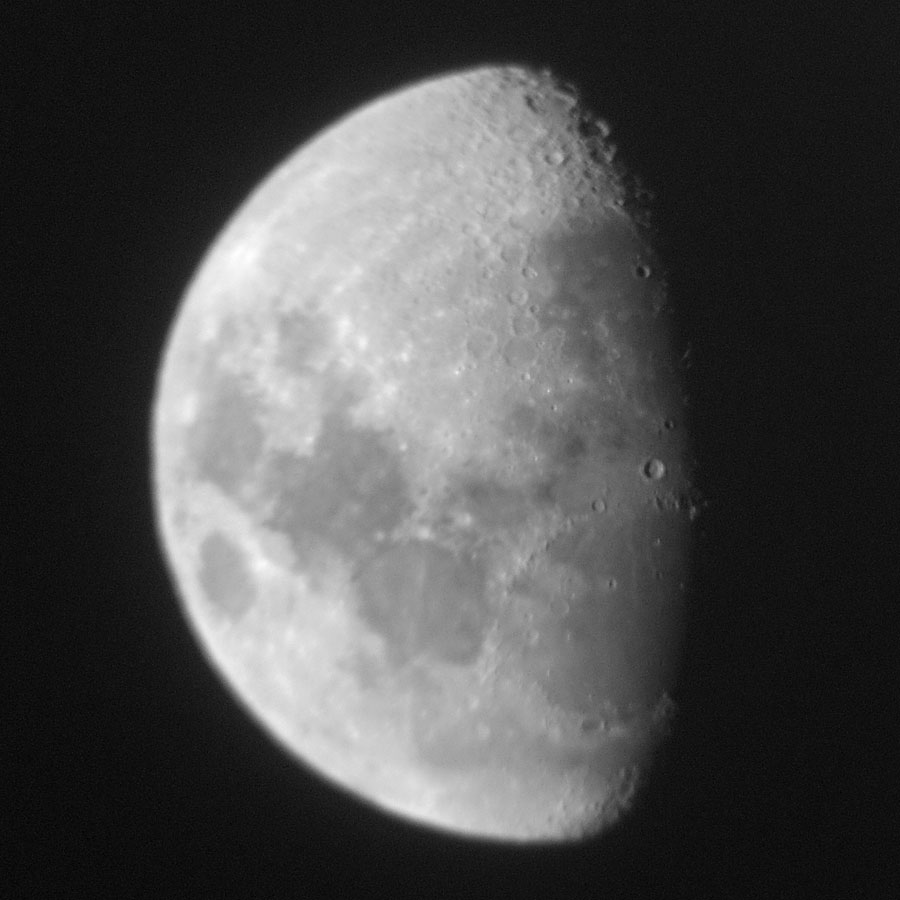 |
| 2400 Pixels | 2400 Pixels |
Preliminary Conclusions
With its spherical body, which rests in a bowl, the Sky-Watcher Infinity 76 telescope, or the Omegon version 76/300, reminds me in many respects of the famous Astroscan telescope by Edmund Scientific, which is unfortunately no longer manufactured. It is promoted as a telescope for children, but adults also use this telescope for quick observations or when traveling. The telescope is supplied with a 30 x eyepiece, which shows the image upright (but sideways) so that children can handle the telescope more easily. Previously, it was apparently delivered with an additional 15 x overview eyepiece, which does not reverse the image. I was able to purchase this eyepiece as well and consider it as very useful, especially since the telescope does not have a viewfinder. So I now had two eyepieces with different behaviors, which is certainly not favorable for children (and adults as well).
So far so good, but in detail things look much different, and most of the problems result from the focus mechanism and the eyepieces, both of which are intertwined. As my comparative tests confirmed, the eyepieces are of low quality, behave differently (one shows the image upright, the other shows it upside down) and cannot be supplemented with additional eyepieces or replaced with better ones due to the special focus mechanism that is built into the telescope. In principle, the focus adjustment mechanism is, especially for children, easy to use - you simply rotate the eyepieces to focus - but regrettably the implementation is poor. I find it difficult (and other users, too) to find the exact focus point. And at least one of the eyepieces fits so loosely to the eyepiece tube that the painstakingly adjusted focus is lost again when I release the eyepiece after focusing. In addition, the focus point is immediately lost as soon as you push even slightly against the eyepiece, because it sits so loosely in the eyepiece tube. I also have problems using the eyepieces without moving the telescope and losing sight of the targeted object, which makes an eyepiece exchange (for example, from 15 x to 30 x in order to observe details) frustrating.
I tried to solve some of these problems by gluing plastic tape into the eyepiece tube and onto an eyepiece (onto the 30 x eyepiece, which has more slack in the eyepiece tube). After that, I found an even simpler solution using Velcro and plastic tape, which does not require changes to the eyepieces. Now, the eyepieces fit relatively tightly the ocular tube, focusing is better, and the focus point does not shift so easily when one touches the eyepiece. However, inserting and replacing the eyepieces has become more difficult. In addition, I converted the 30 x eyepiece (that is, I removed the reversing prism) so that the reflexes caused by the reversing prism are gone and that it now behaves like the 15 x eyepiece (the image is upside down). This may not be a suitable alternative for children, because the image is now always upside down...
I can not tell much about the primary mirror, except that the Venus crescent appeared two or threefold, which indicates that the mirror is under tension. This is, however, also the case with my other cheaper telescopes (and a borrowed Celestron FirstScope 76...), although not to the same extent.
All in all, the Sky-Watcher Infinity 76, or the Omegon version, is, in my opinion, a missed opportunity for making astronomy accessible to children. It feels for me like a garbage product, which in many points imitates a higher quality product, the Edmund Scientific Astroscan, and might have taken its place if the quality were better, because the Astroscan is no longer manufactured. But as it is, it can, in my opinion, not fulfill these expectations. The optics (at least, the eyepieces) and the focusing mechanism are regrettably poor and thus, will keep away many children from astronomy instead of attracting them to this wonderful hobby. The focusing mechanism also requires dedicated eyepieces and thus, prevents the use of further and better eyepieces. At least, I was able to improve a few things so that it is usable now.
I find the principle adopted from the Astroscan telescope of moving a sphere in a shell for alignment ingenious and also more stable than many mini Dobsonian bases. But without any form of a viewfinder searching for sky objects turns into a ordeal, and only a few children will probably bring the needed patience with them. I also think it is funny that you can hold the telescope like the Astroscan in your hands, but that is certainly not usable for children...
Links
- Omegon Telescope N 76/300 (astroshop.eu): www.astroshop.eu/omegon-telescope-n-76-300/p,33242
- Sky-Watcher N76/300 Infinity (astroshop.eu): www.astroshop.eu/skywatcher-telescope-n-76-300-infinity/p,4250 (Englisch)
- Skywatcher 15 x eyepiece for the Infinity telescope (astroshop.eu): www.astroshop.eu/skywatcher-15x-eyepiece-for-the-infinity-telescope/p,49819
- Astroscan (Wikipedia): en.wikipedia.org/wiki/Astroscan
- Astroscan Memories (Norman Sperling, January 15, 2011): www.everythingintheuniverse.com/blog/astroscan-memories
- Edmund Scientific Astroscan telescope (Review, 2004): www.dansdata.com/astroscan.htm
- See also my page offering Astronomy Links.
Appendix: Data for Sky-Watcher Dobson Telescope Infinity 76
| Telescope: Sky-Watcher | Infinity 76 |
| Optical Design | Newton (Parabolic) |
| Primary Mirror Diameter | 76 mm (3") |
| Focal Length, Focal Ratio | 300 mm, f/3.95 |
| Resolving Power (arc secs) | 1.53" |
| Limiting Visual Stellar Magnitude | 11.2 mag |
| Light Gathering Power | 117.9 |
| Maximum Practical Visual Power | ca. 100 x (150 x) |
| Optical Tube Dimensions (diam. x length) | n.a. |
| Net Weight Basis | n.a. |
| Net Weight Optical Tube | n.a. |
| Net Weight Complete | n.a. |
Dark Blue: Telescopes that I still own; italic and dark red: telescopes that I owned; black: for comparison; *) own measurement; **) corrected values
See also the table of data for all of my telescopes (and a few more...)
| 30.12.2019 |


